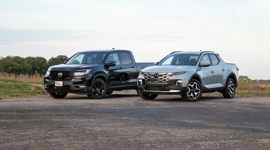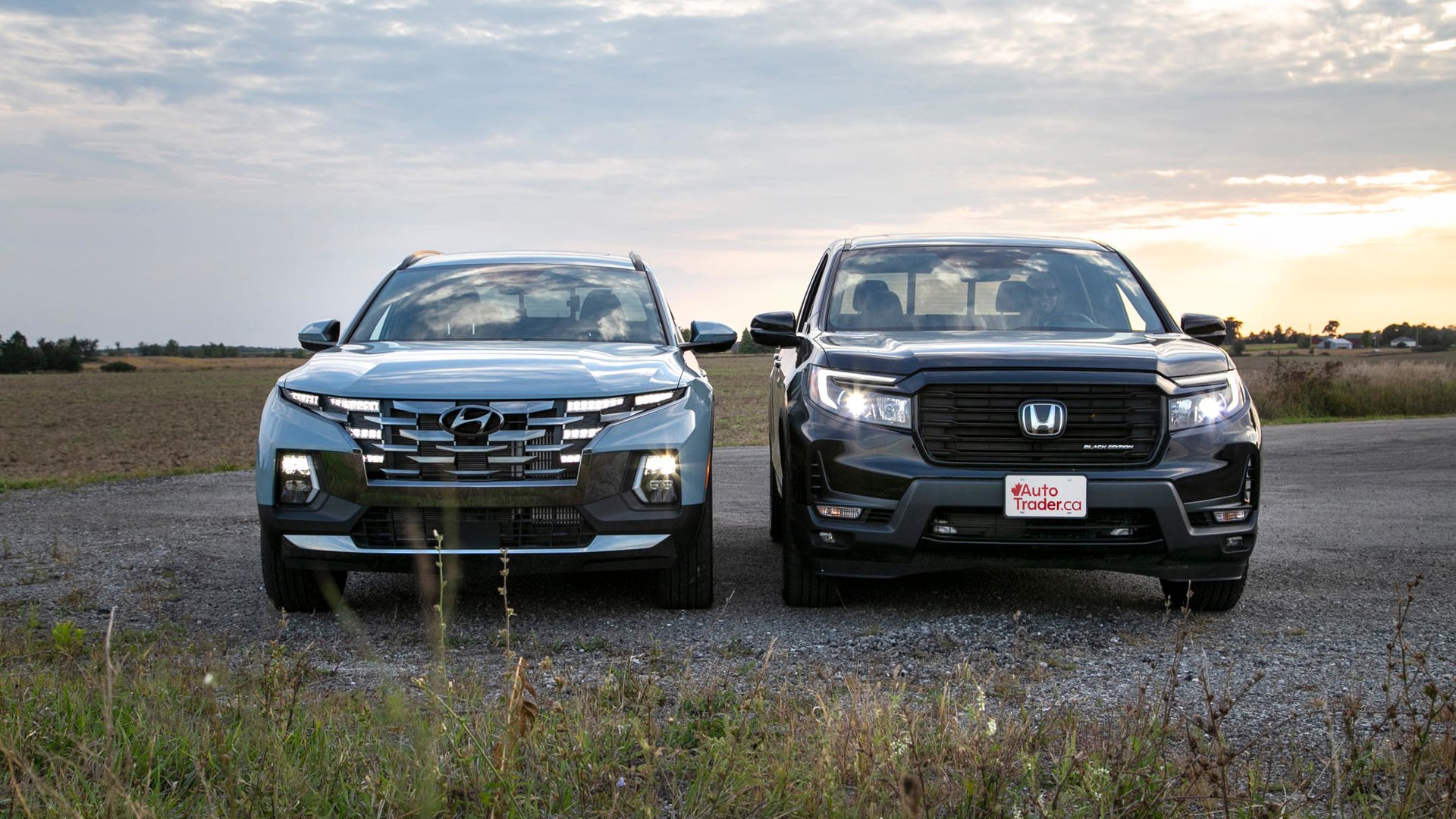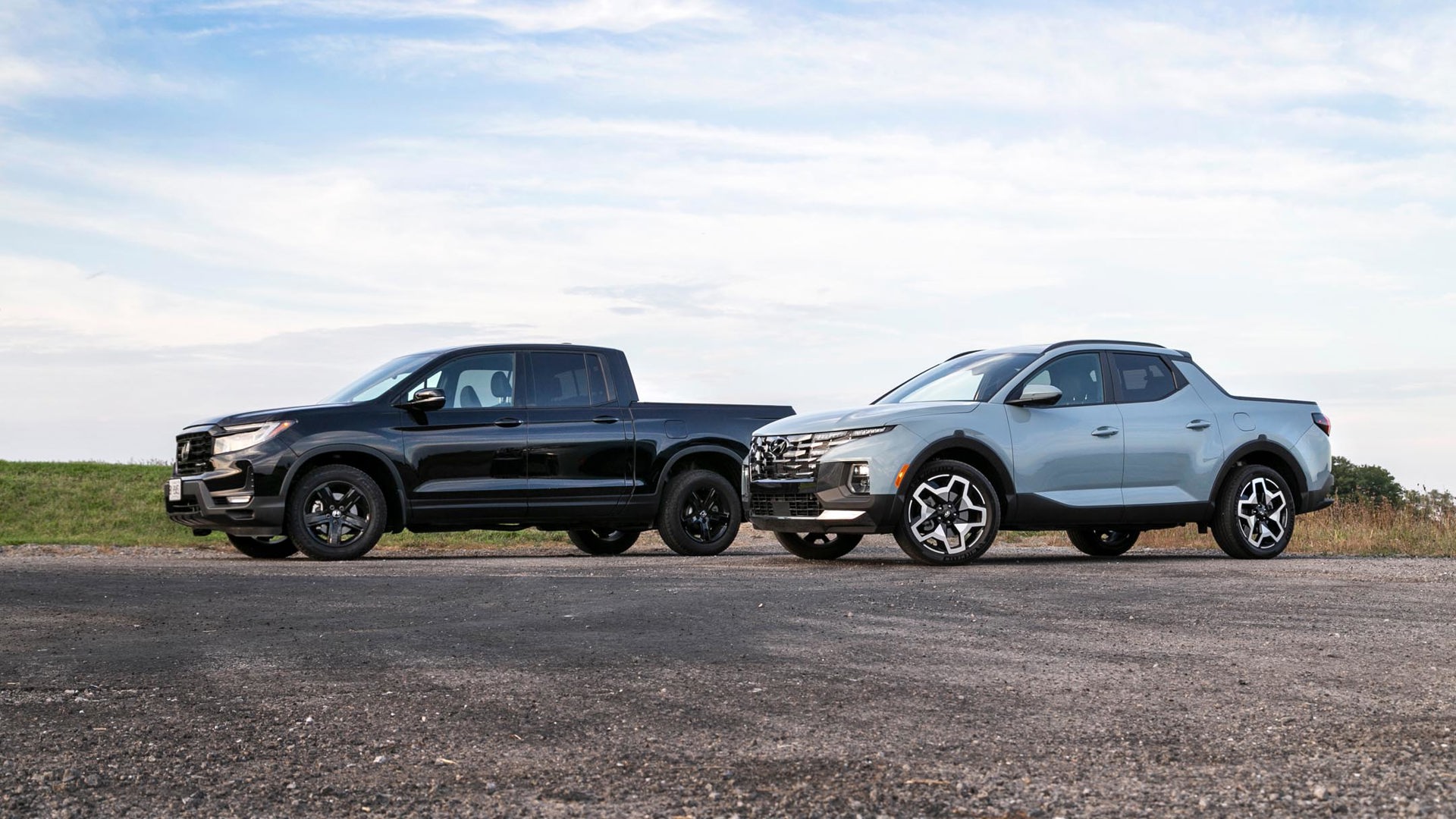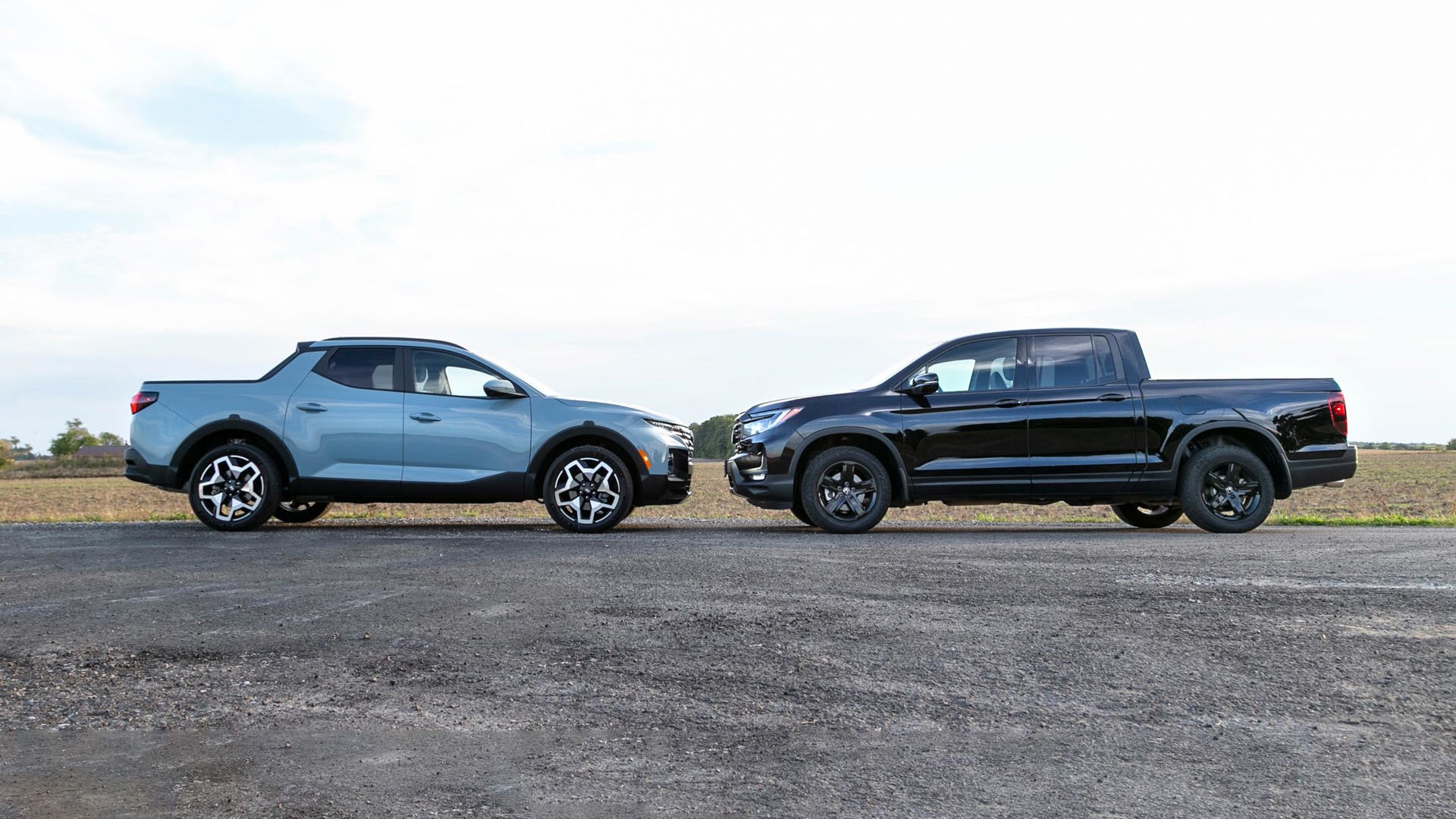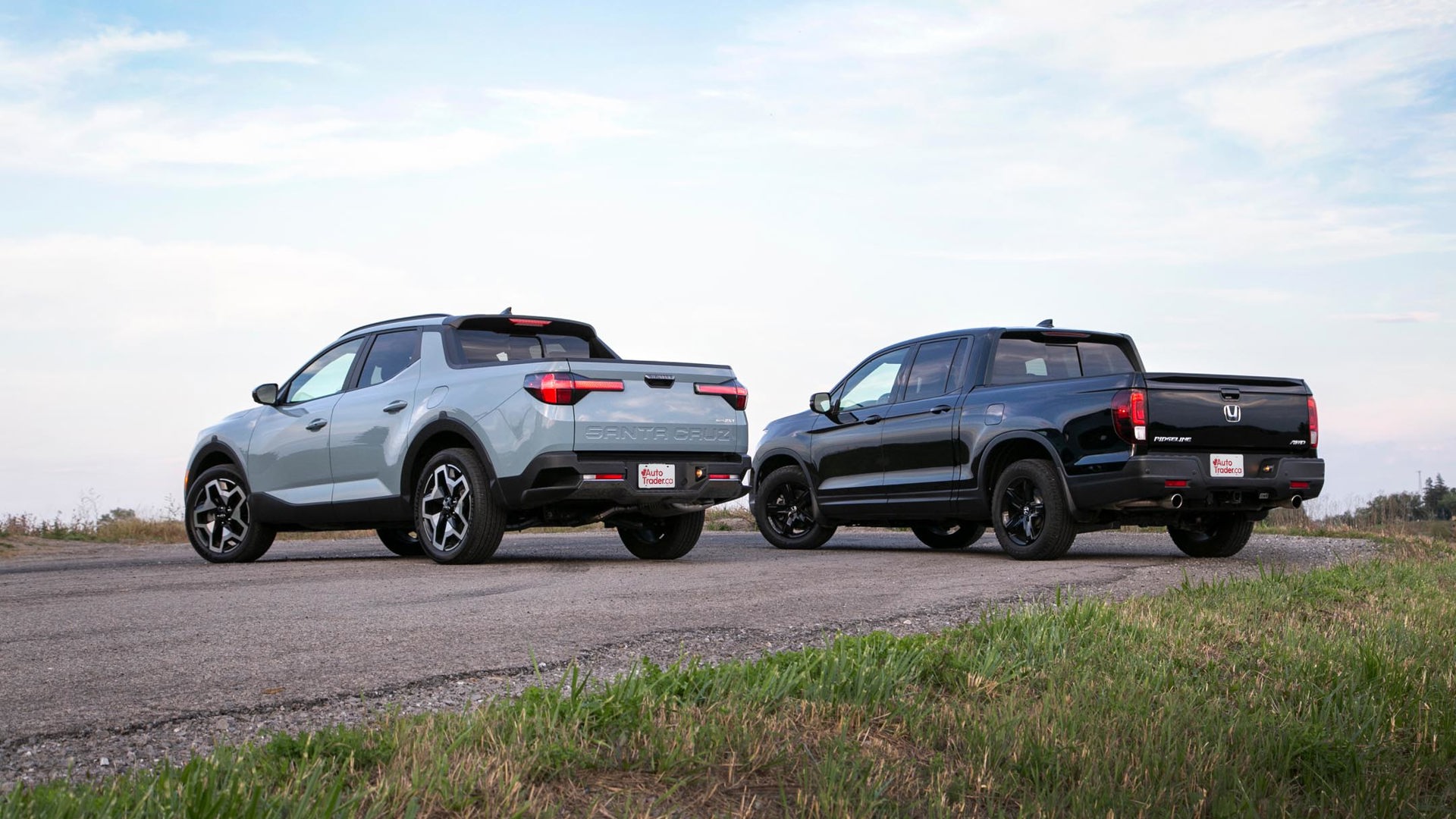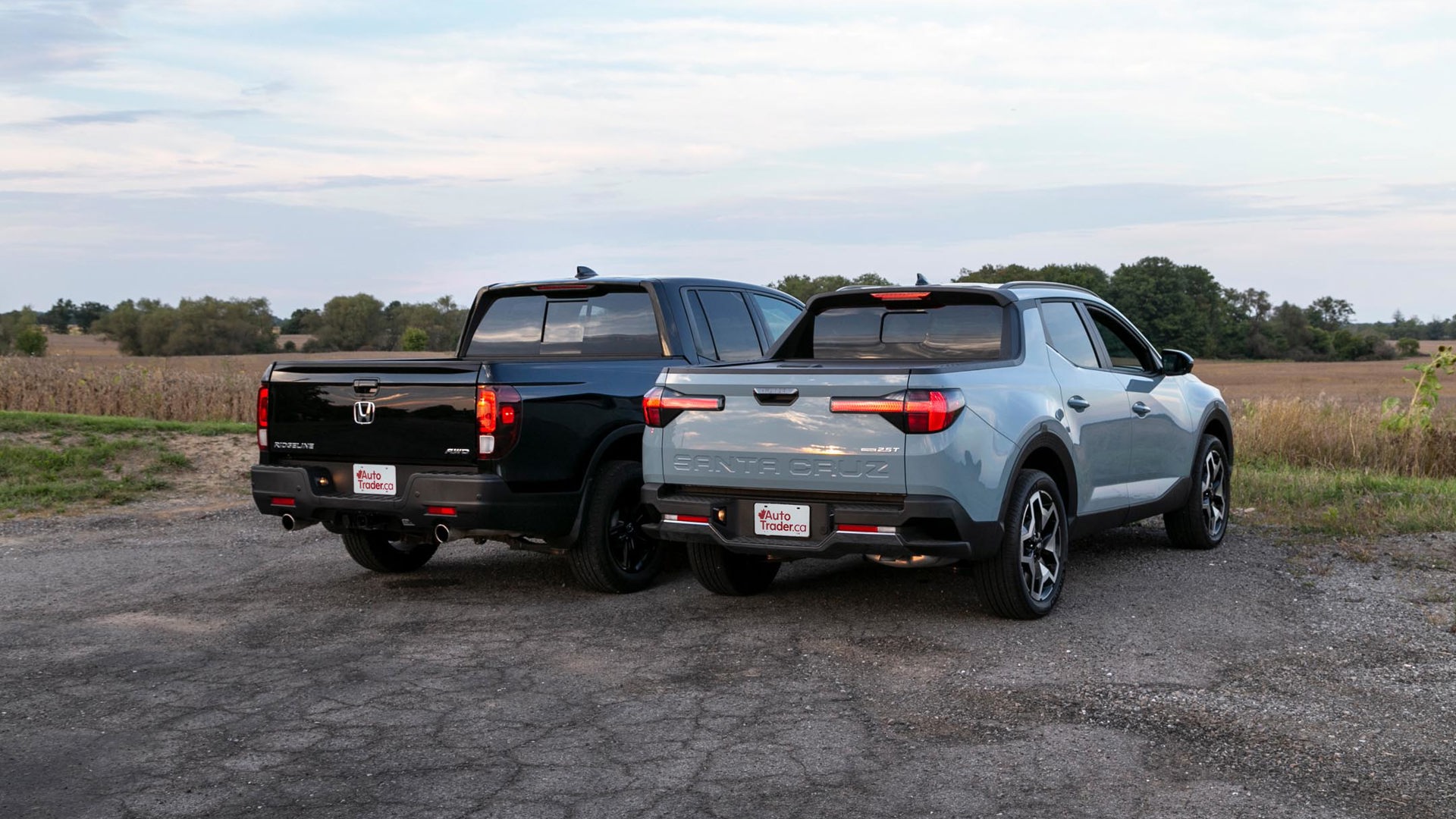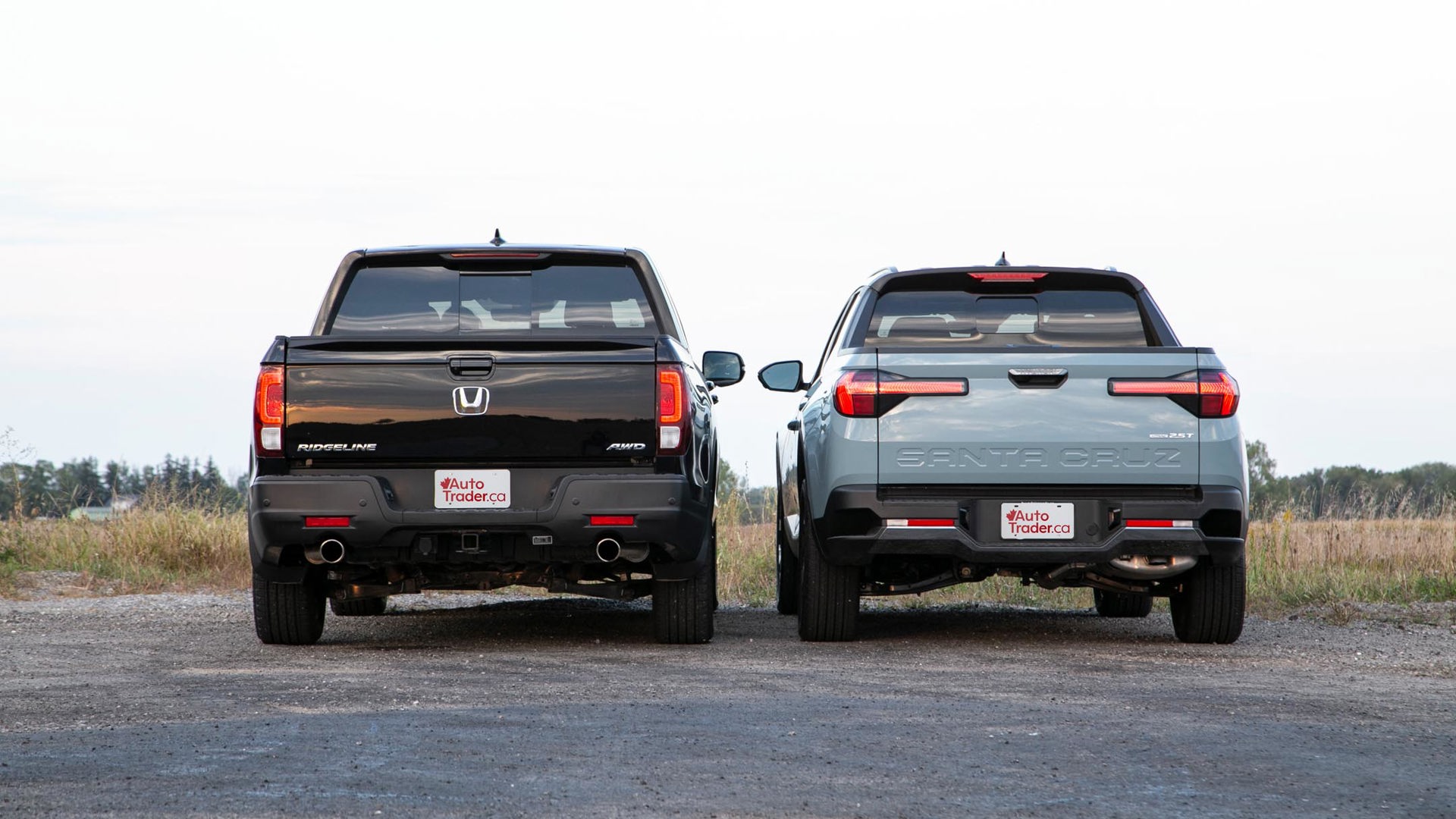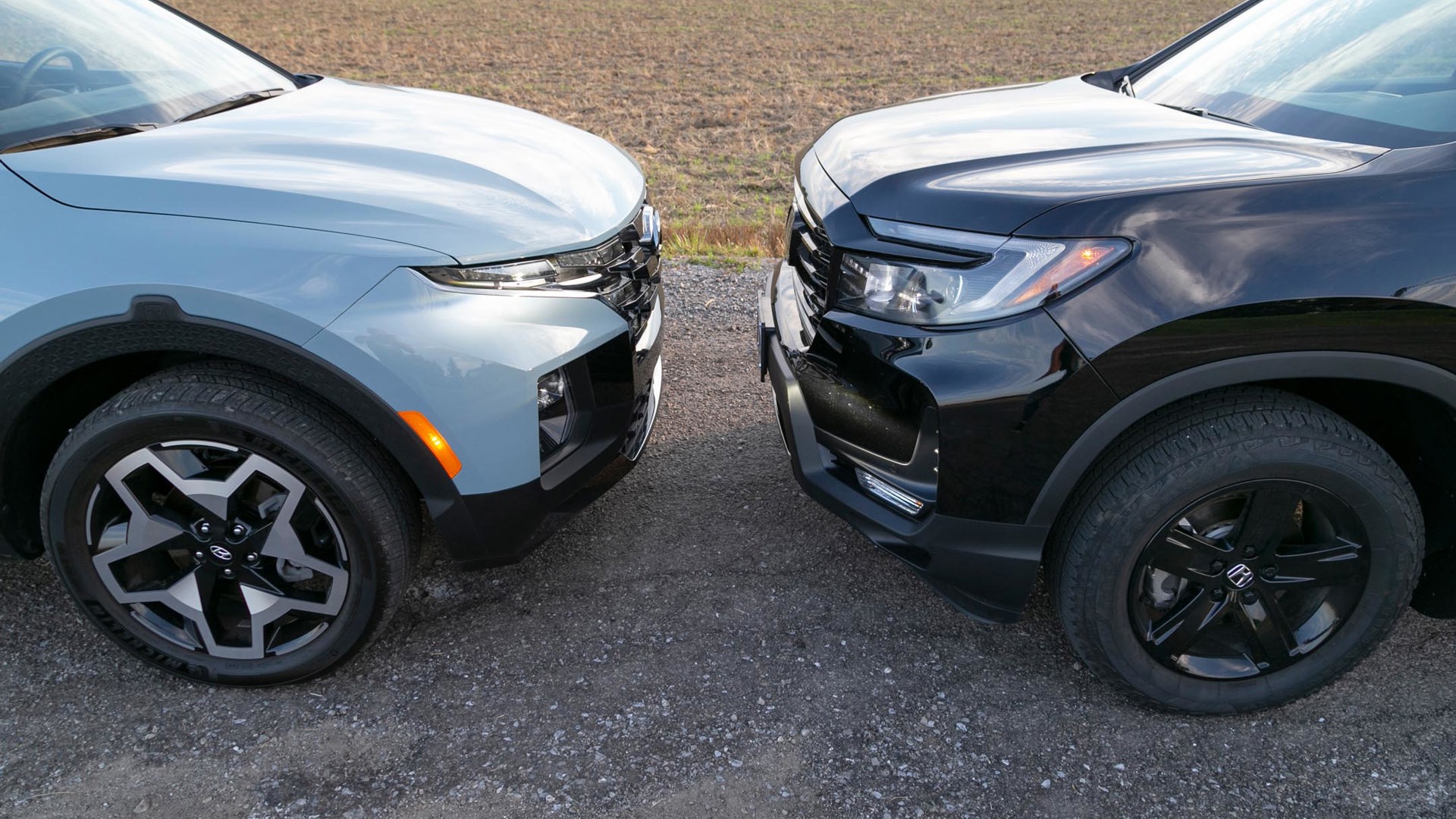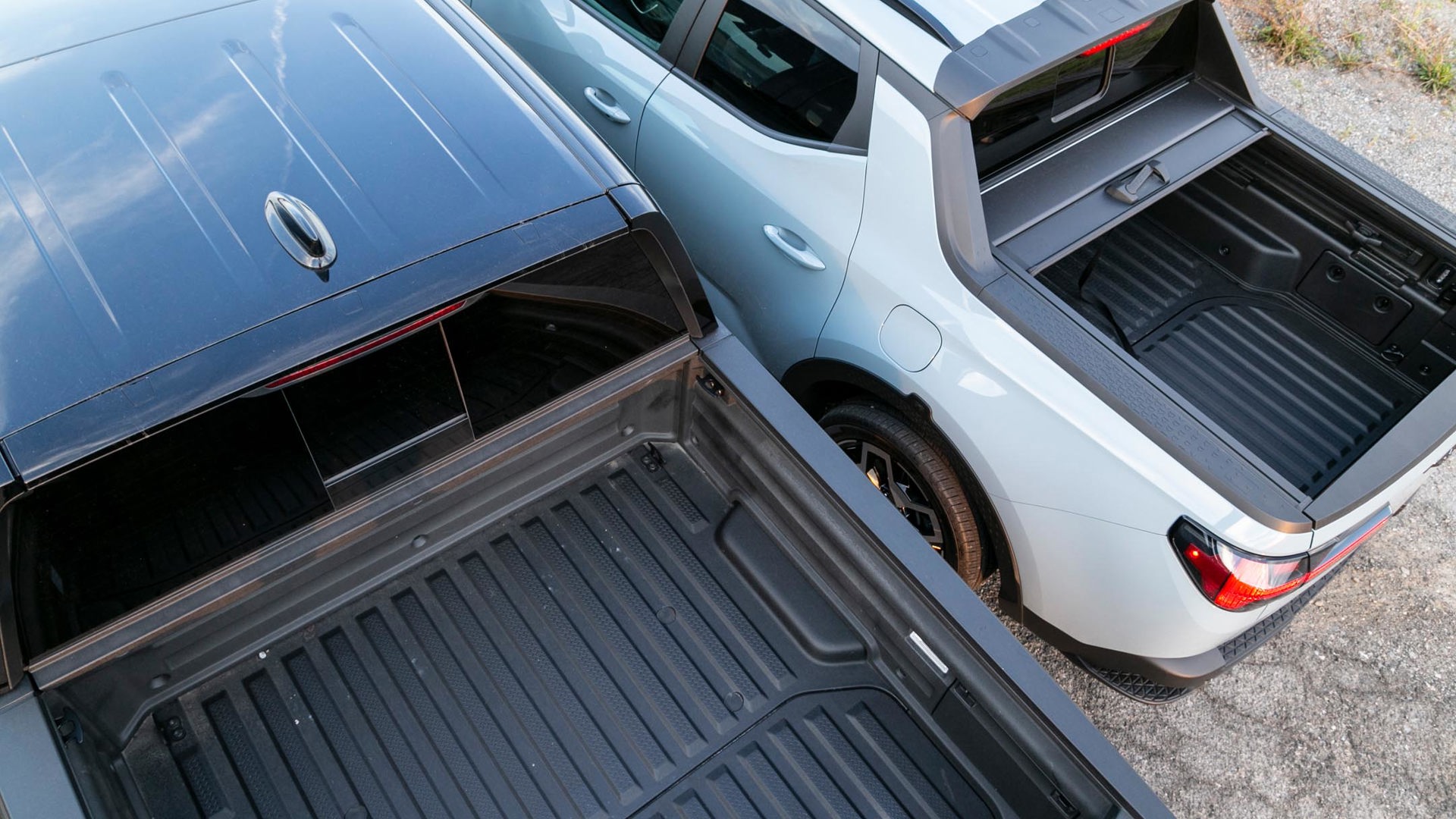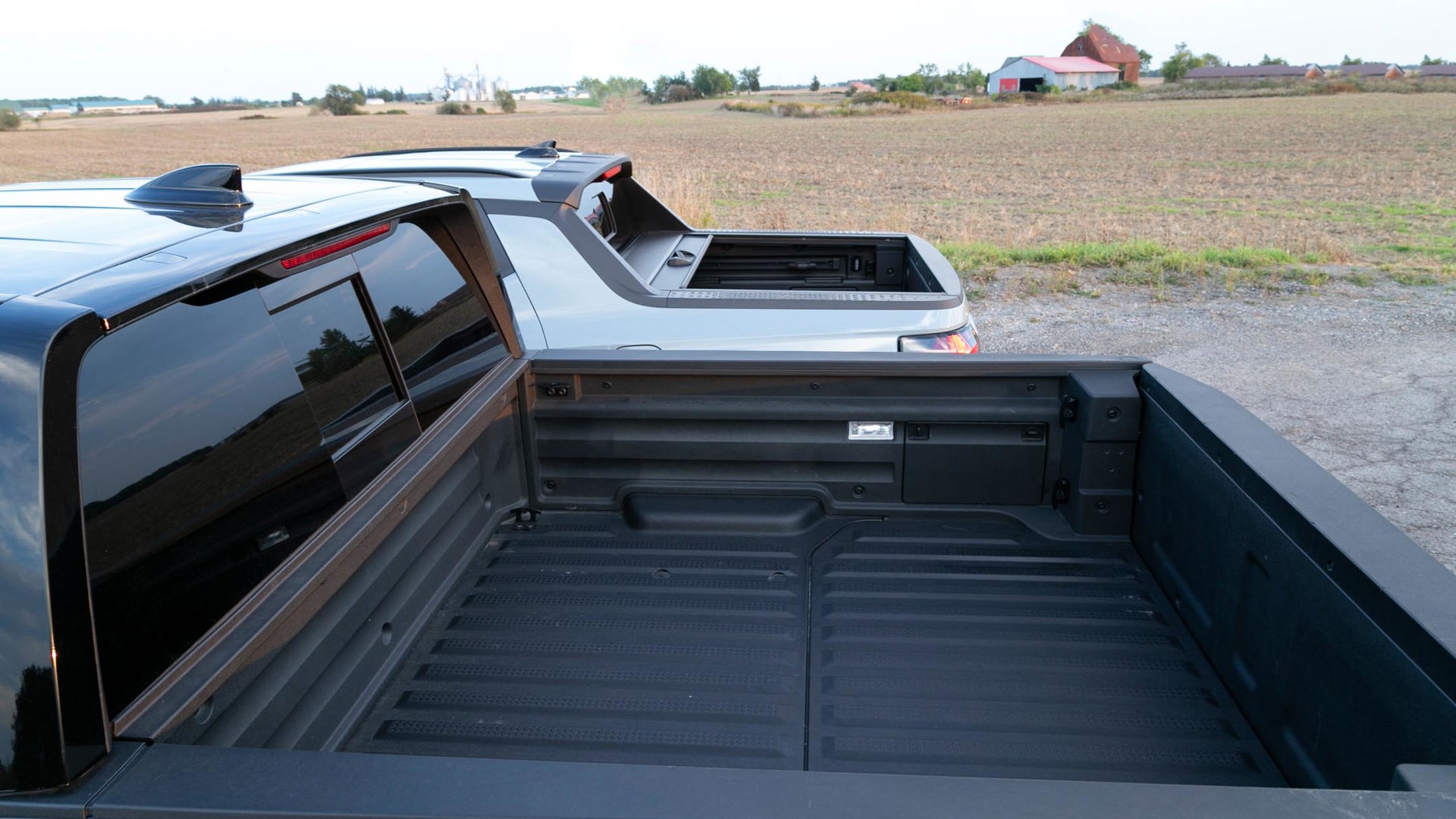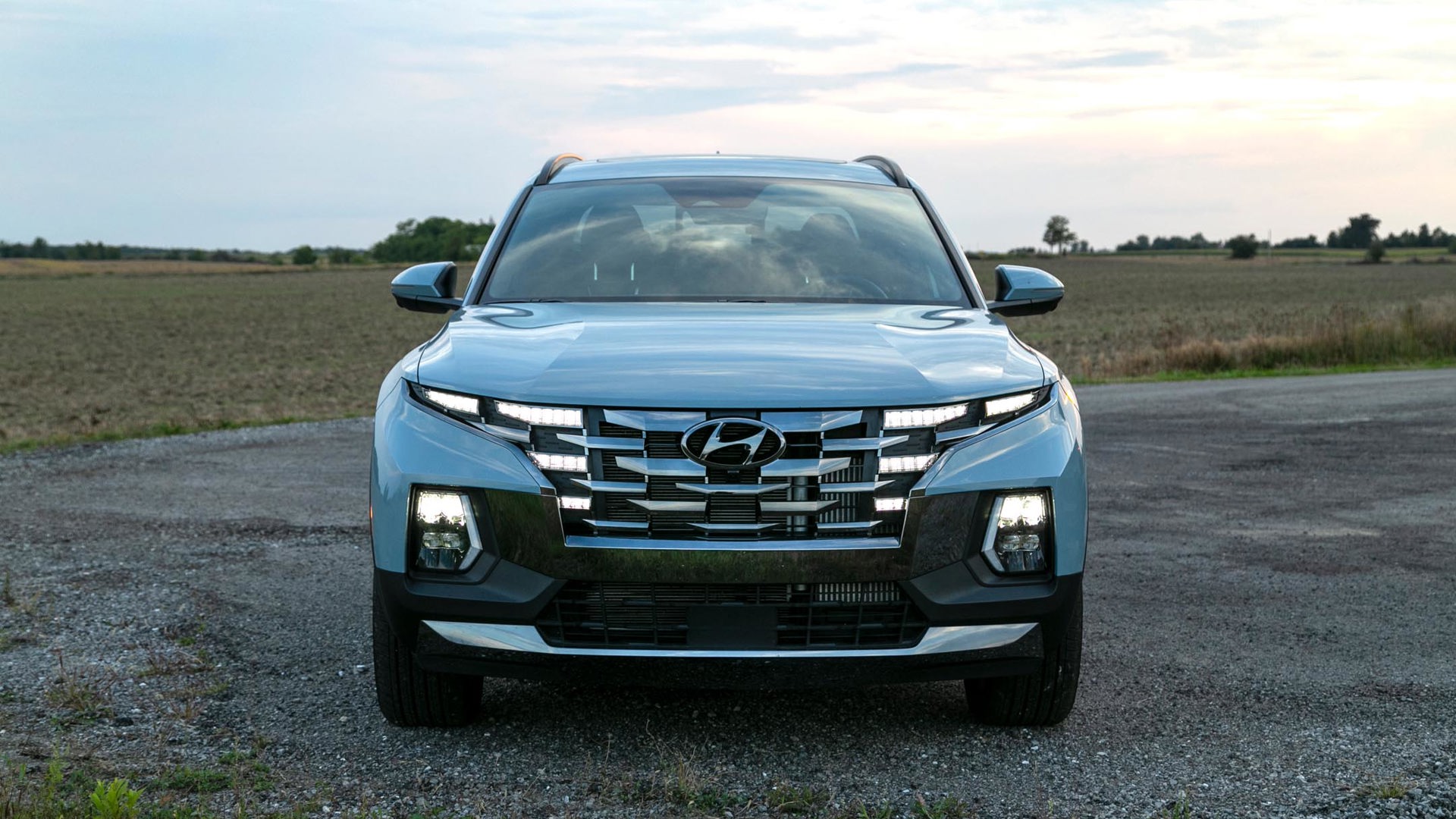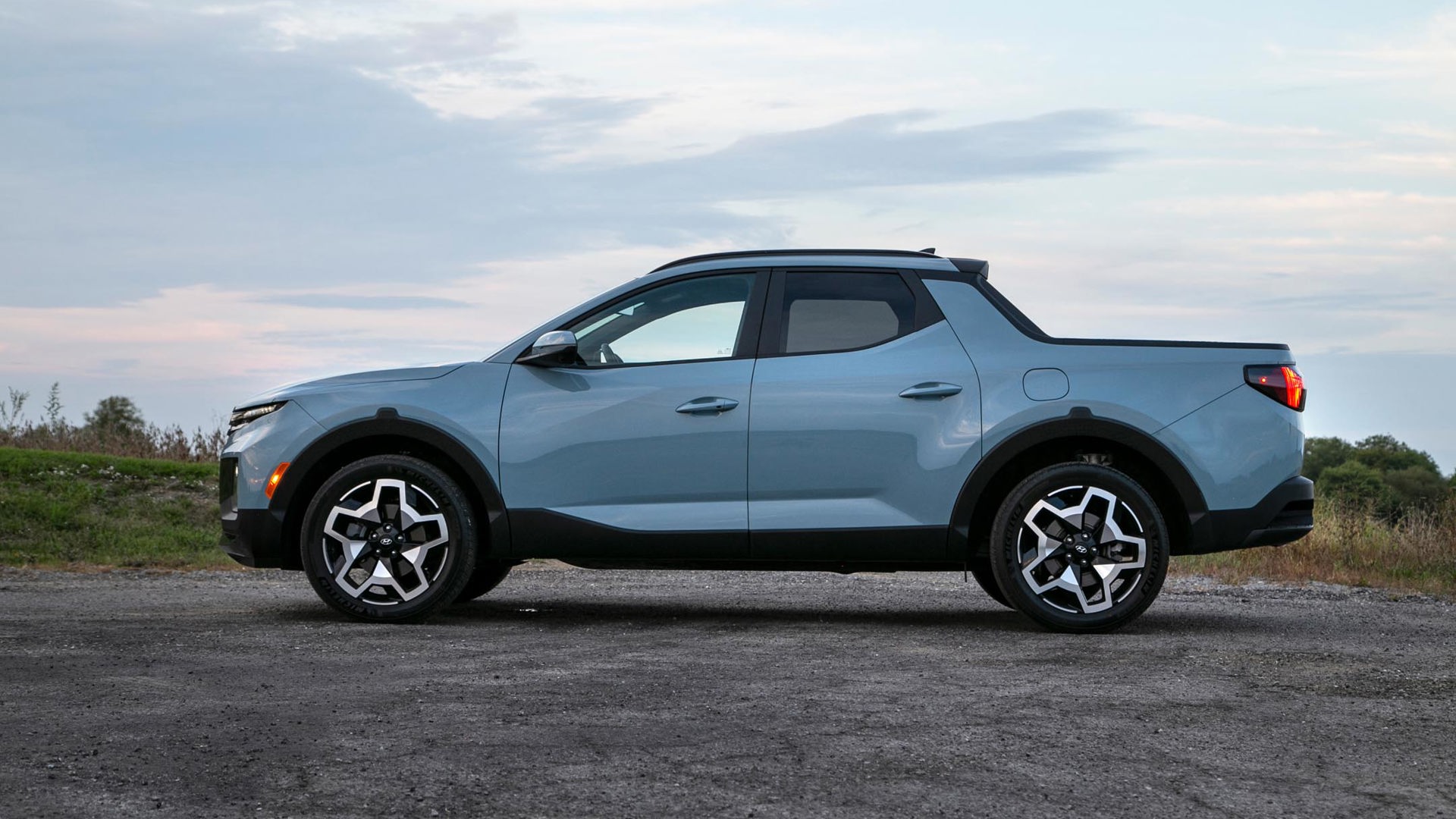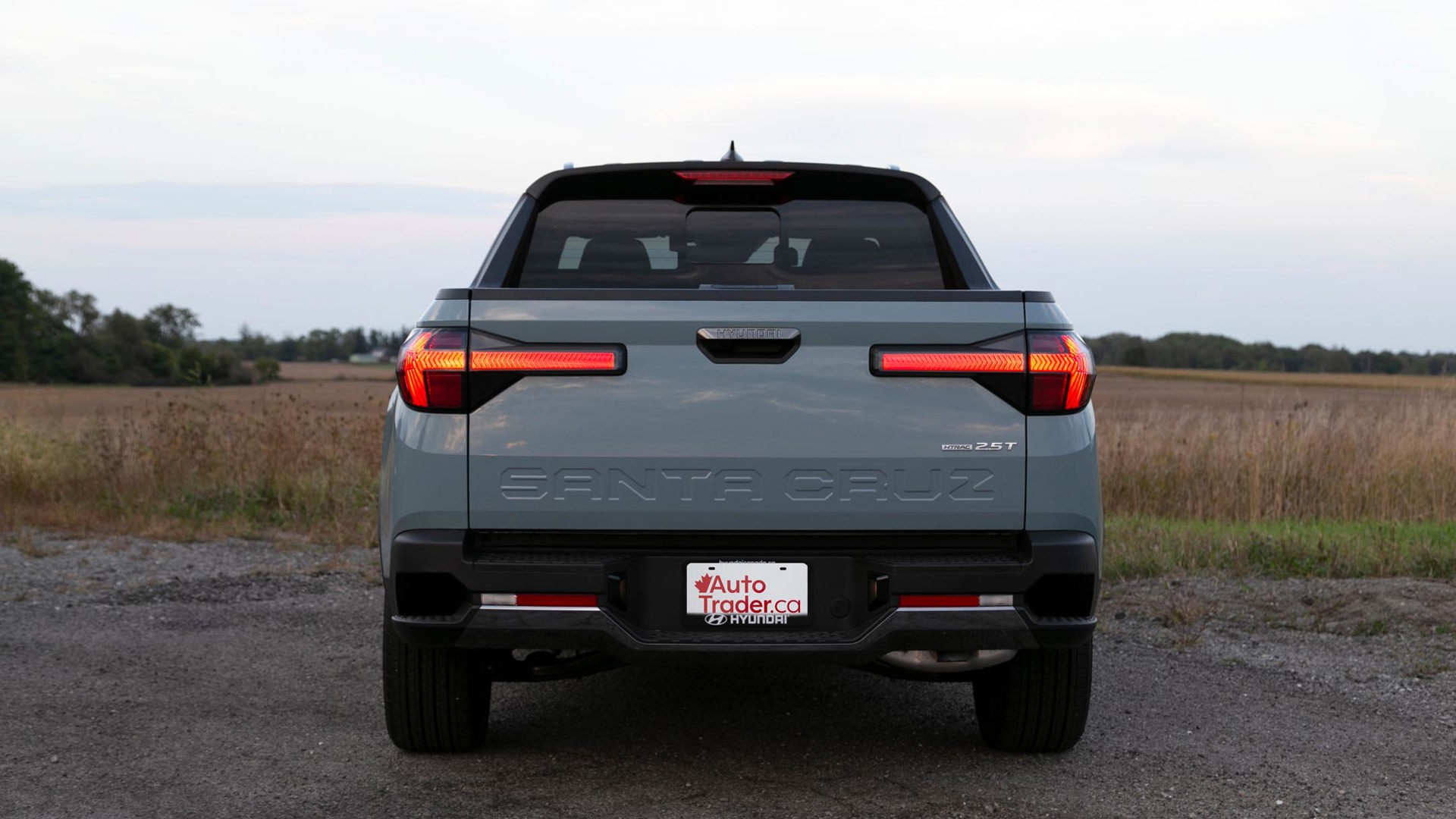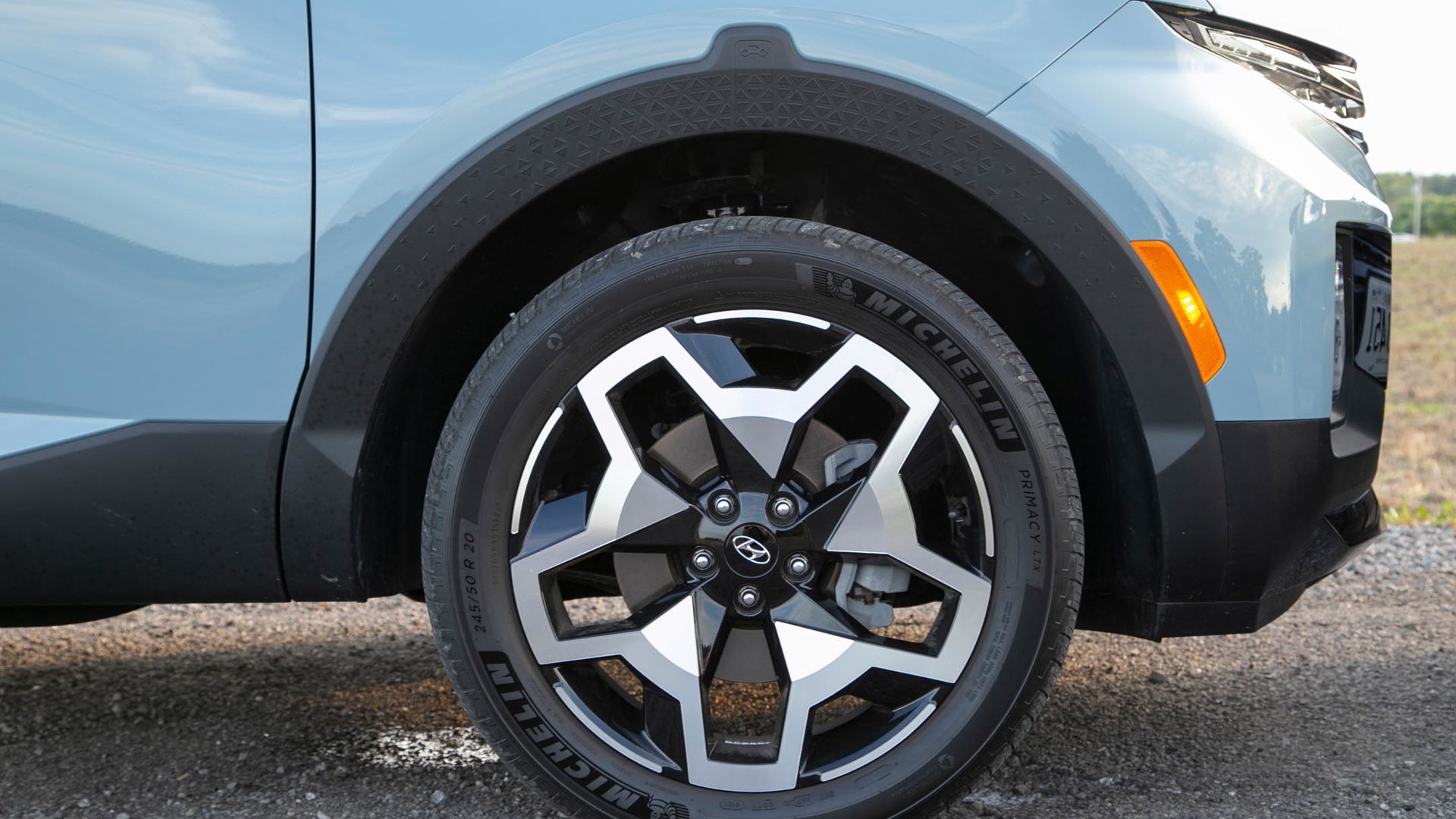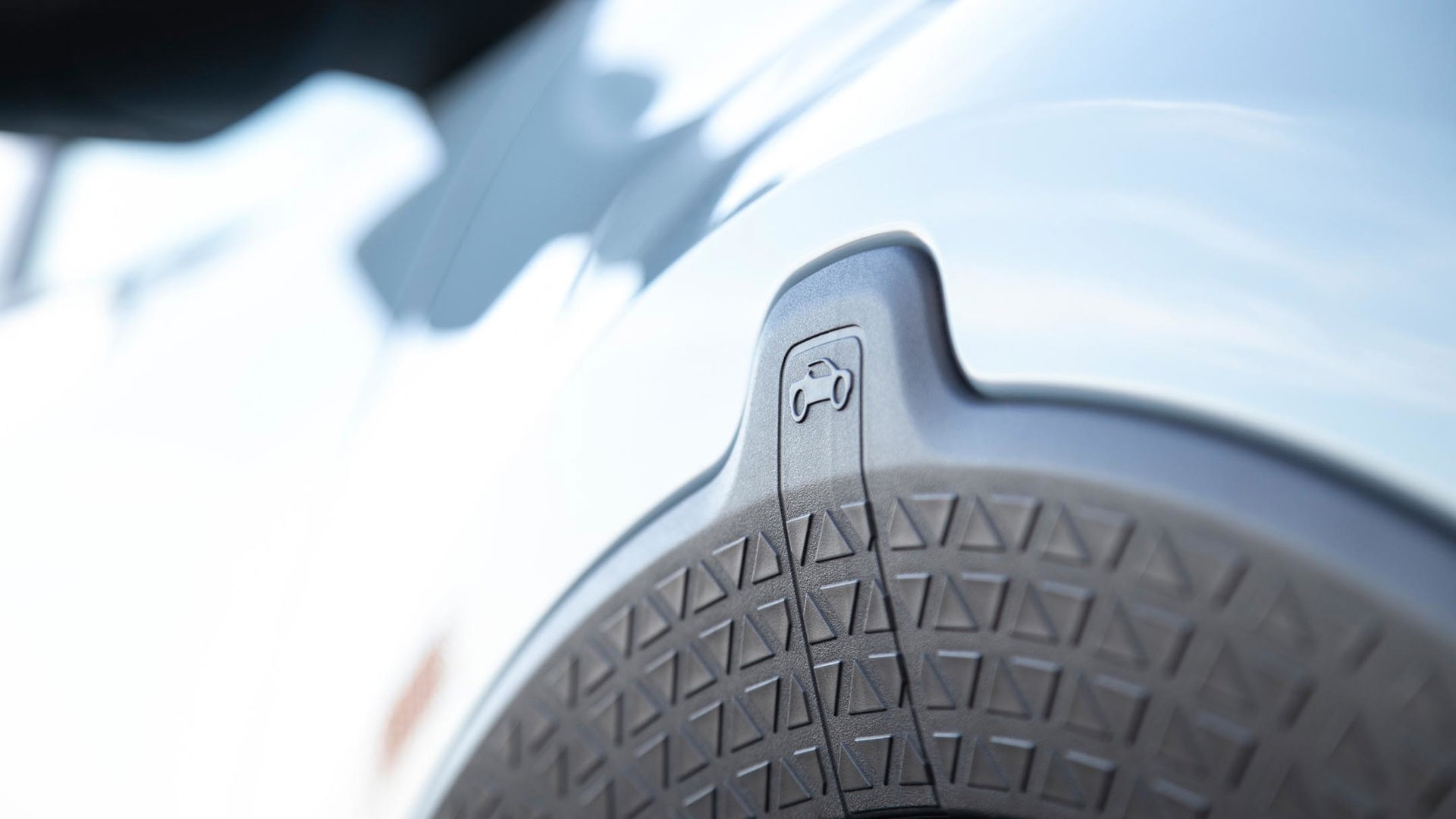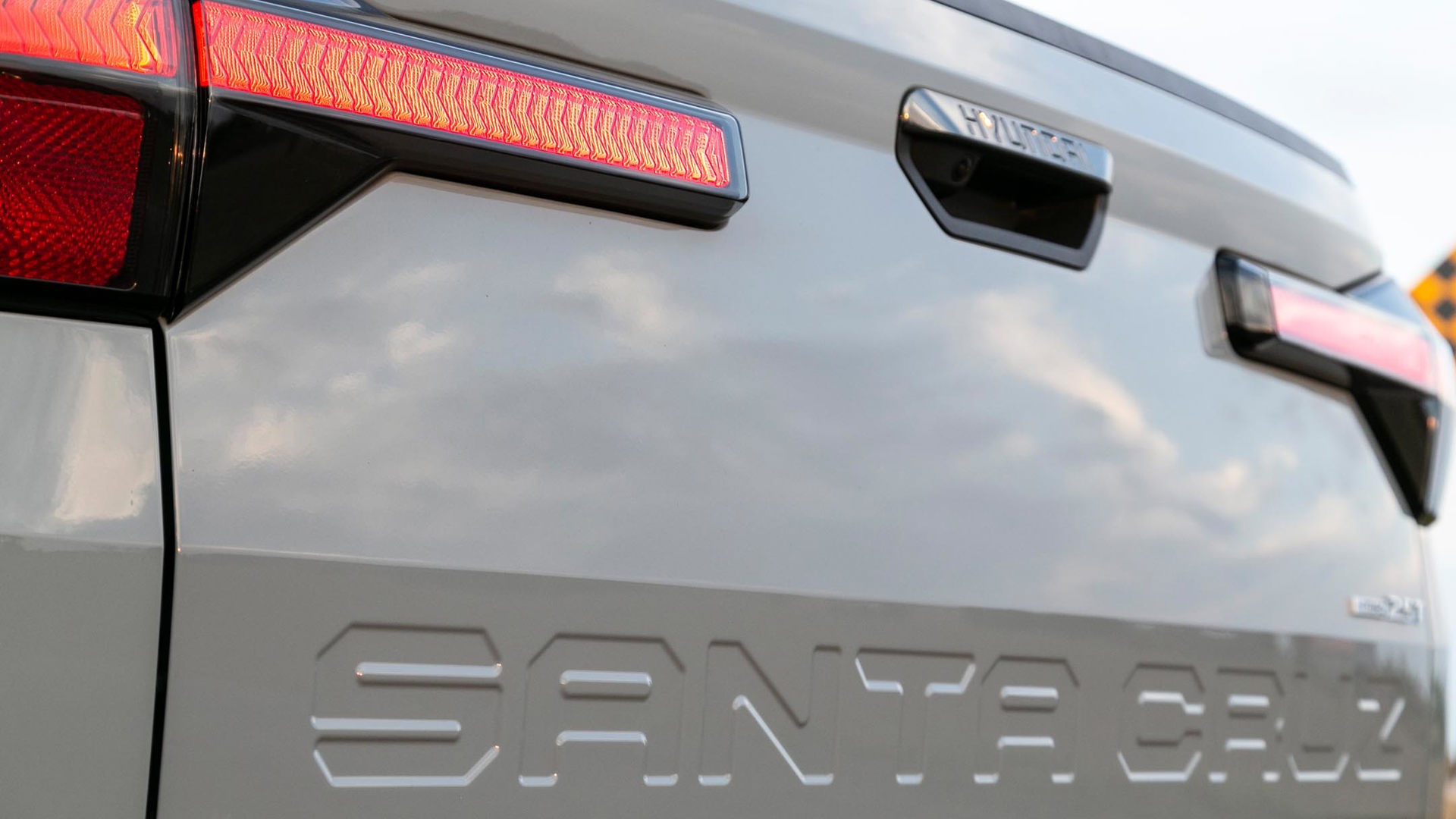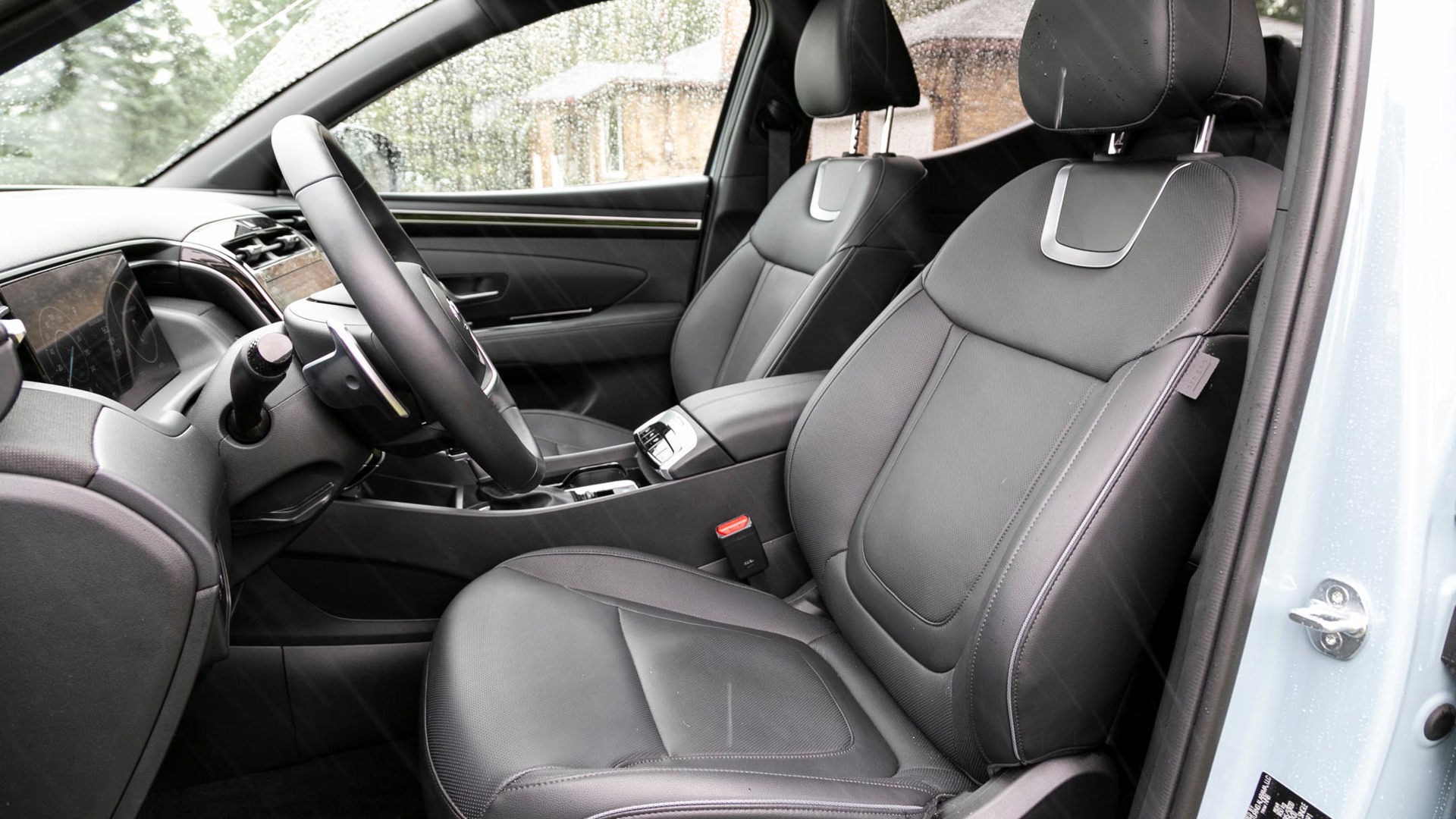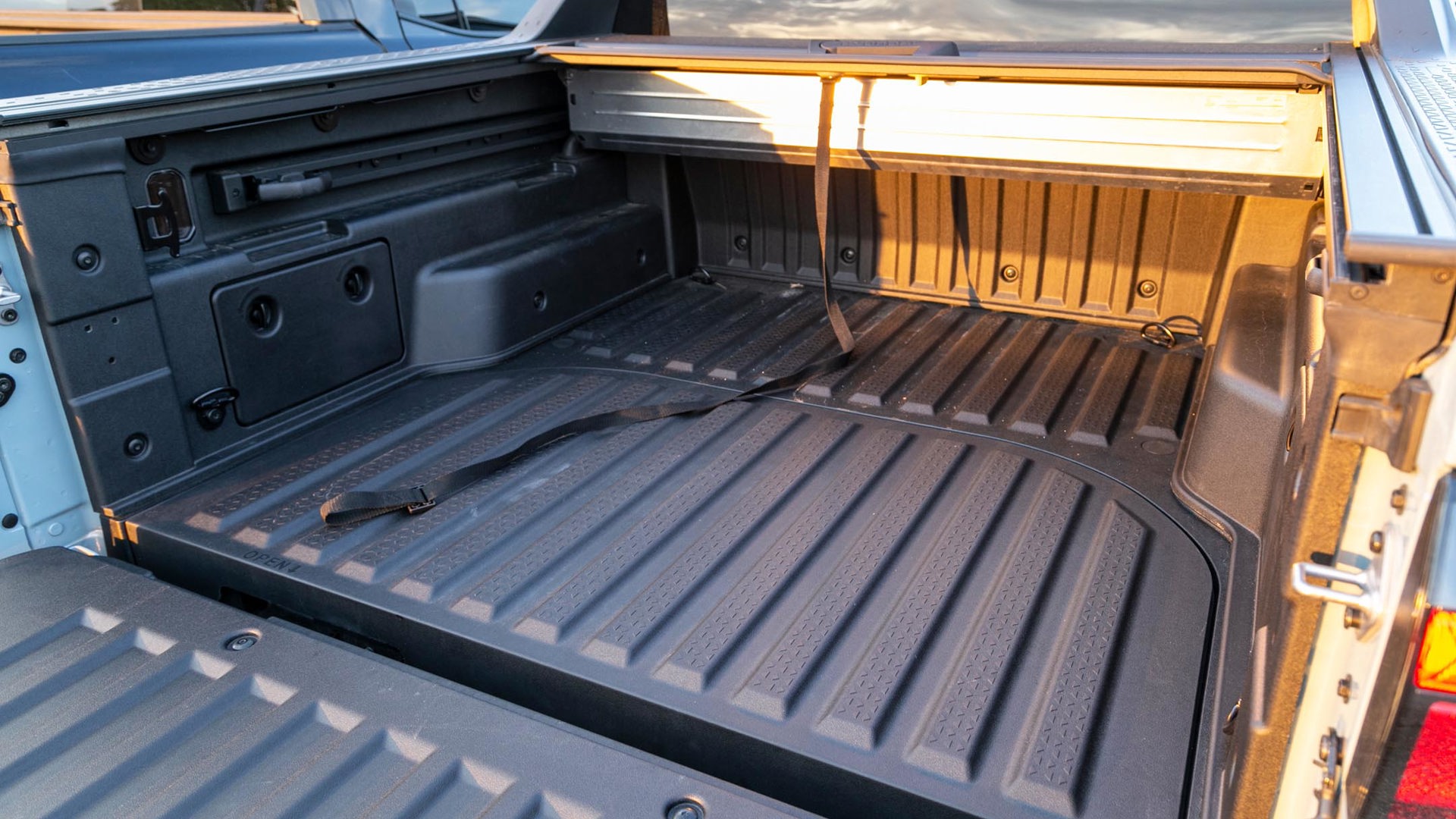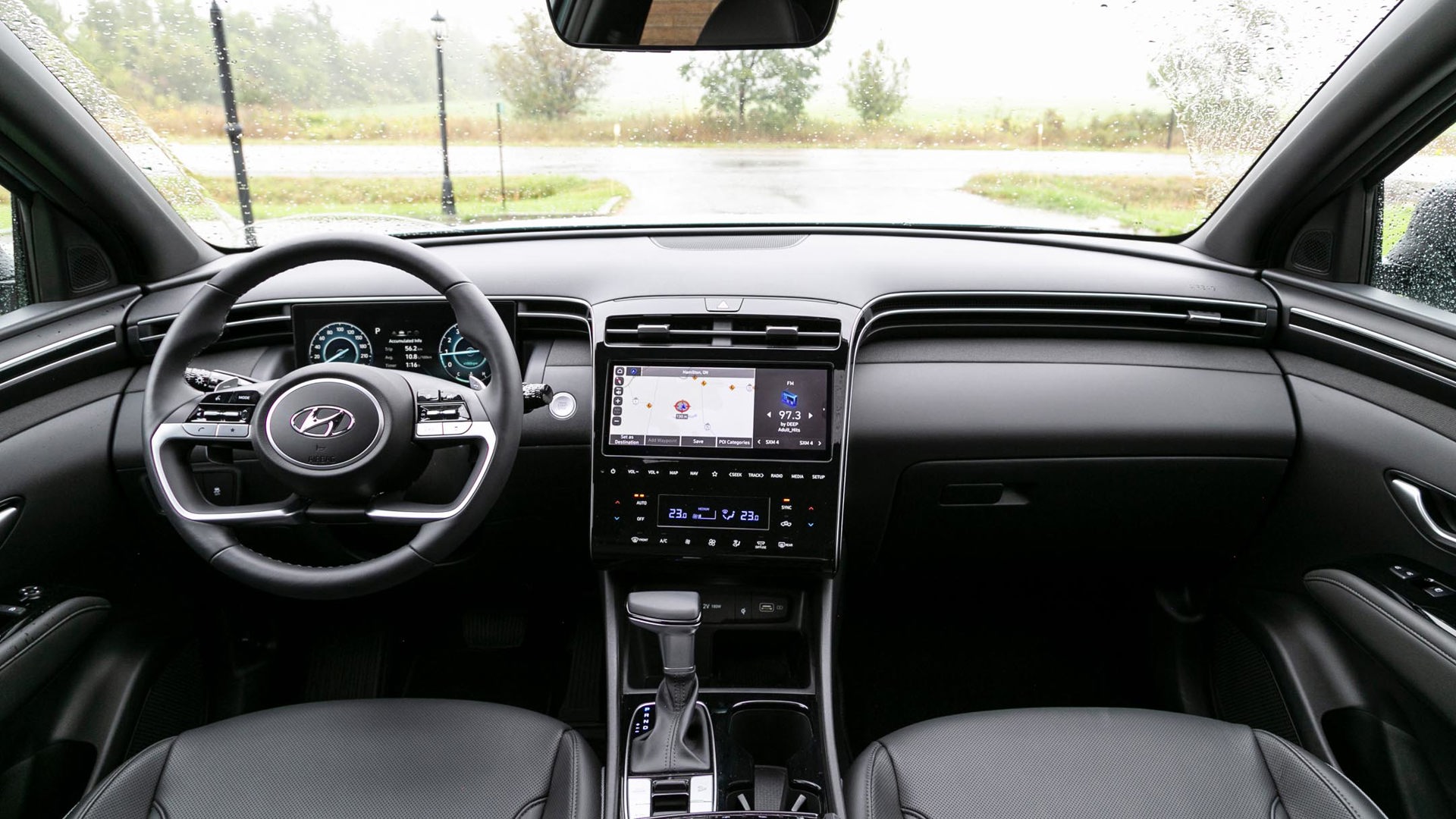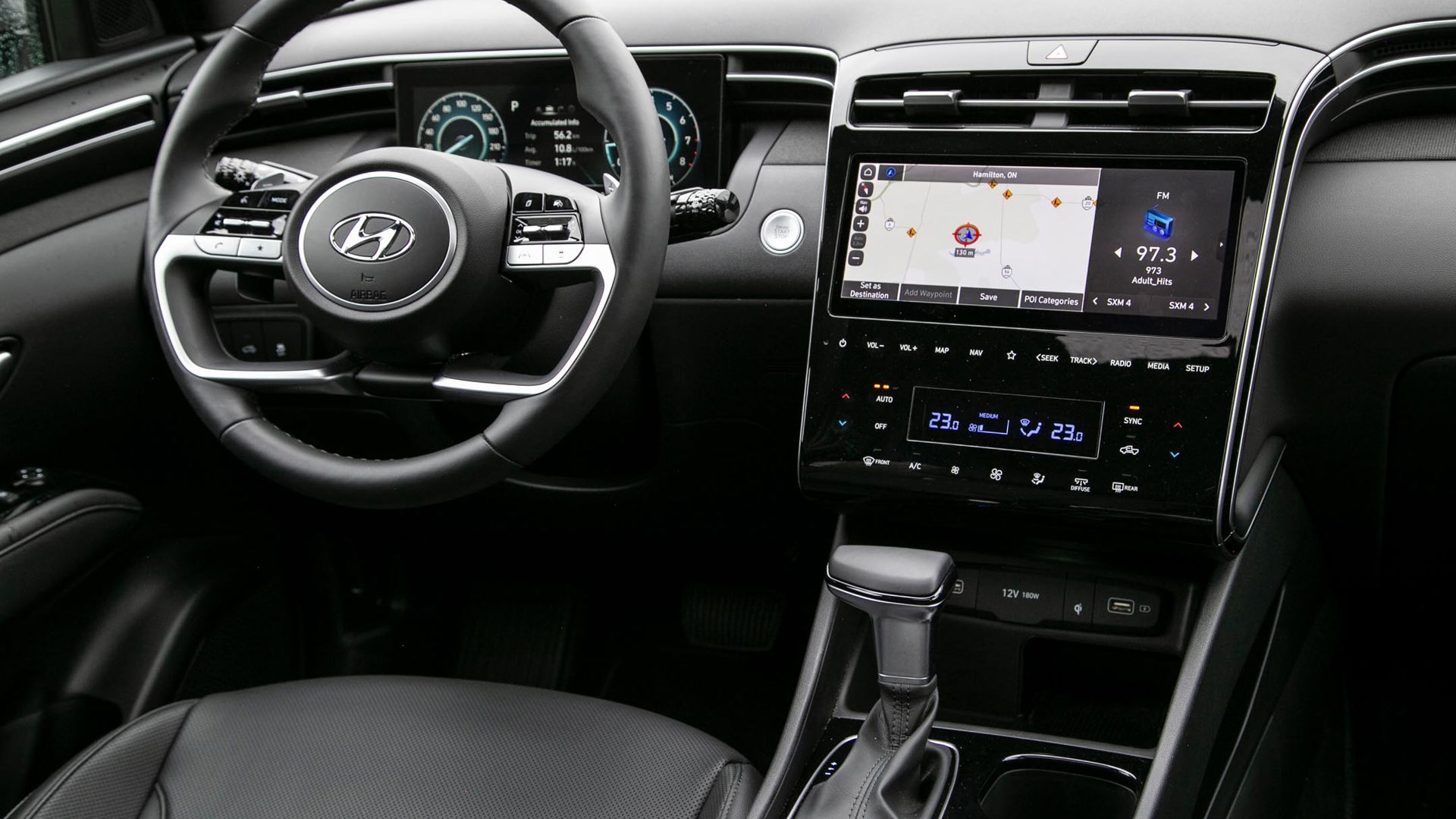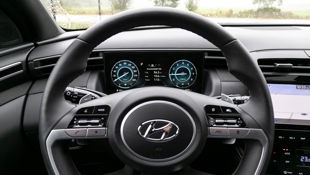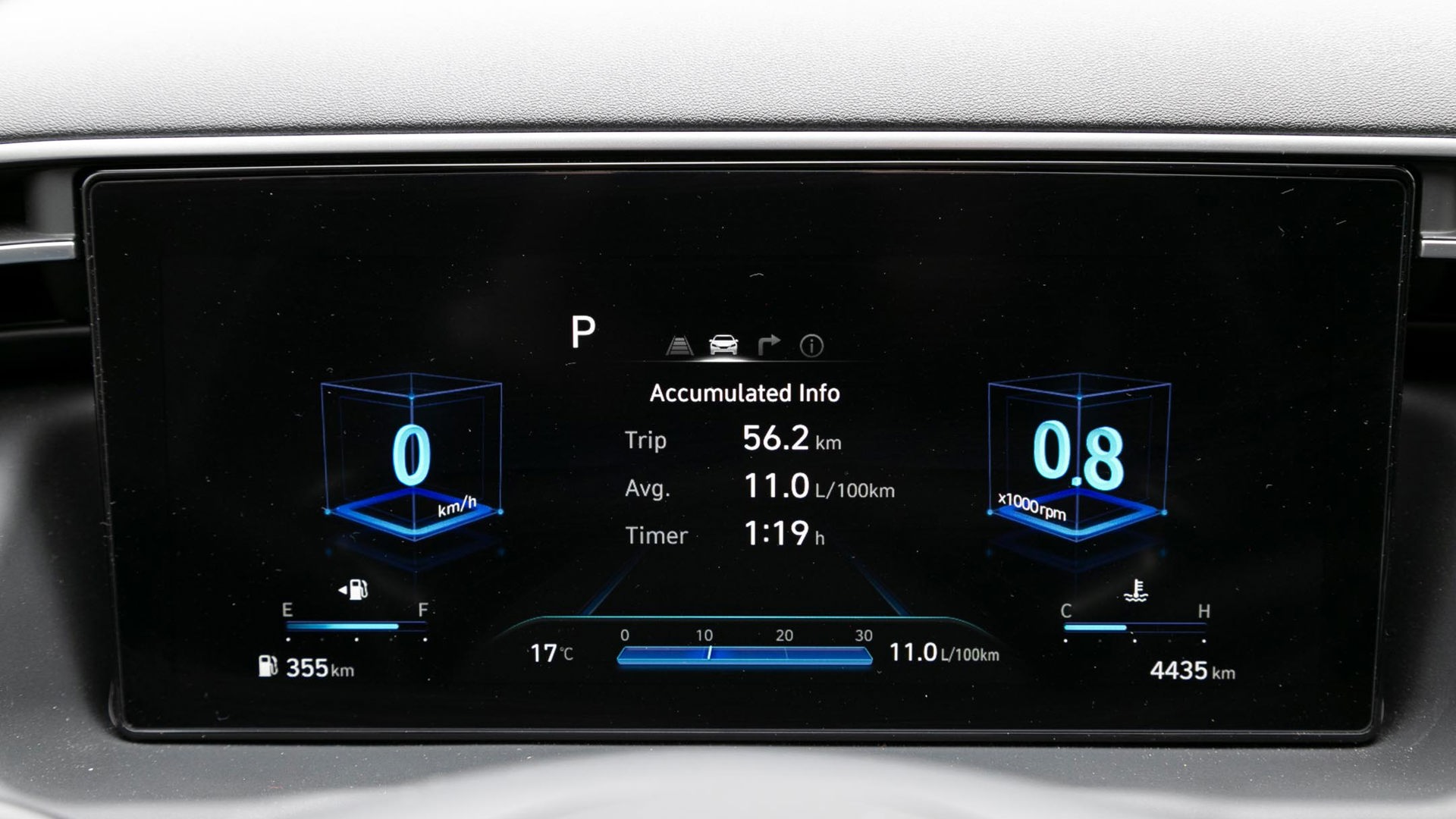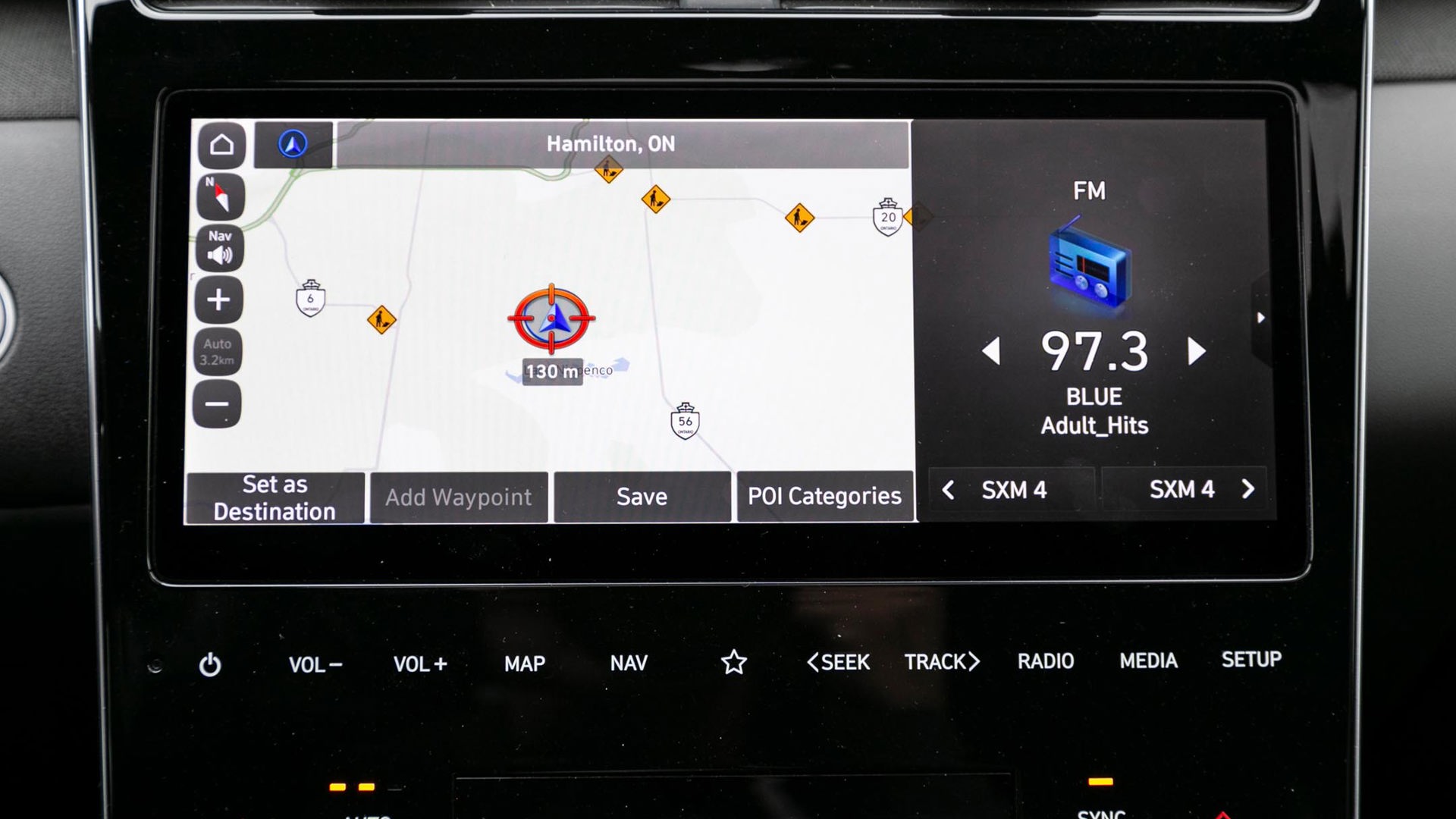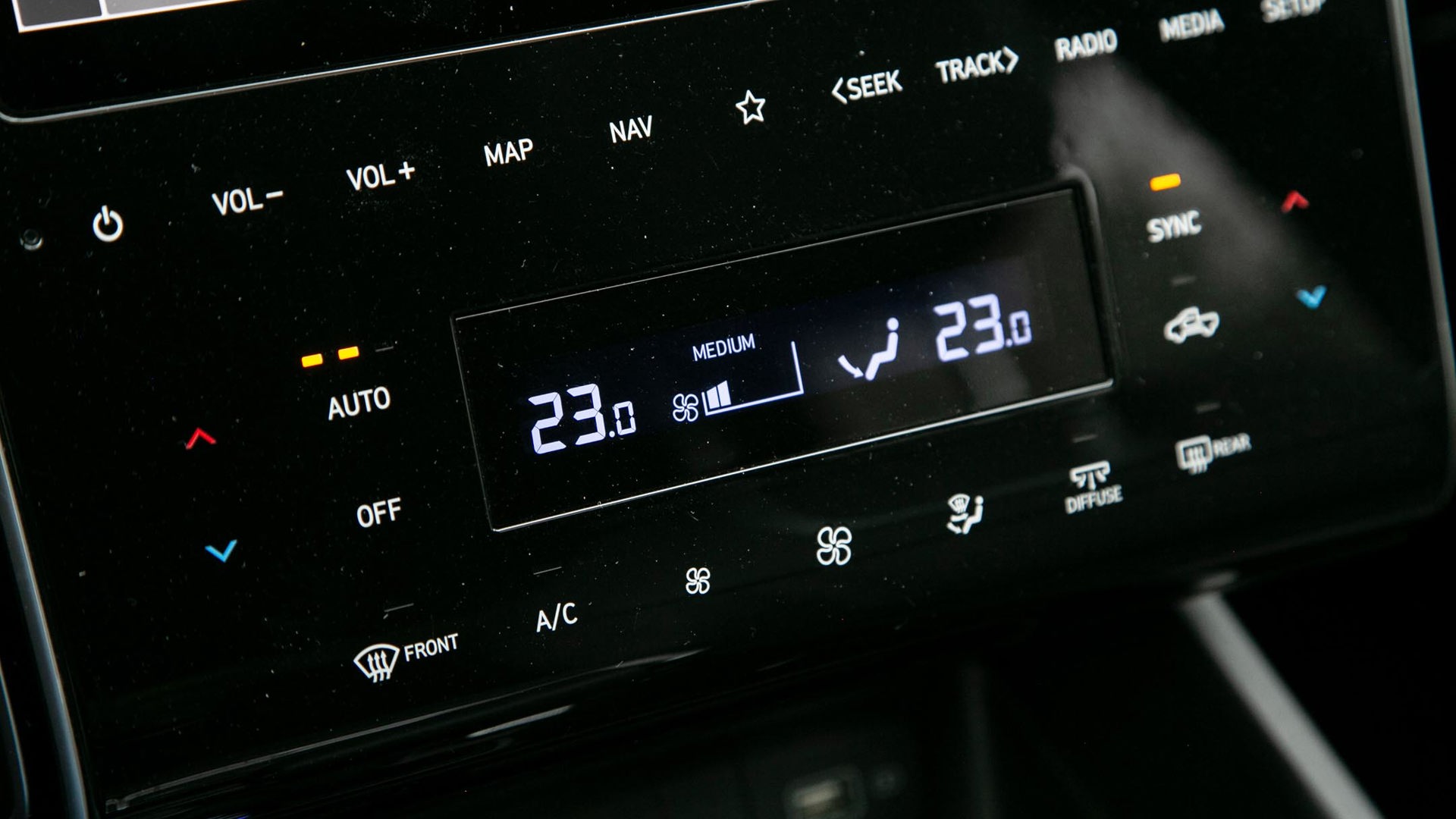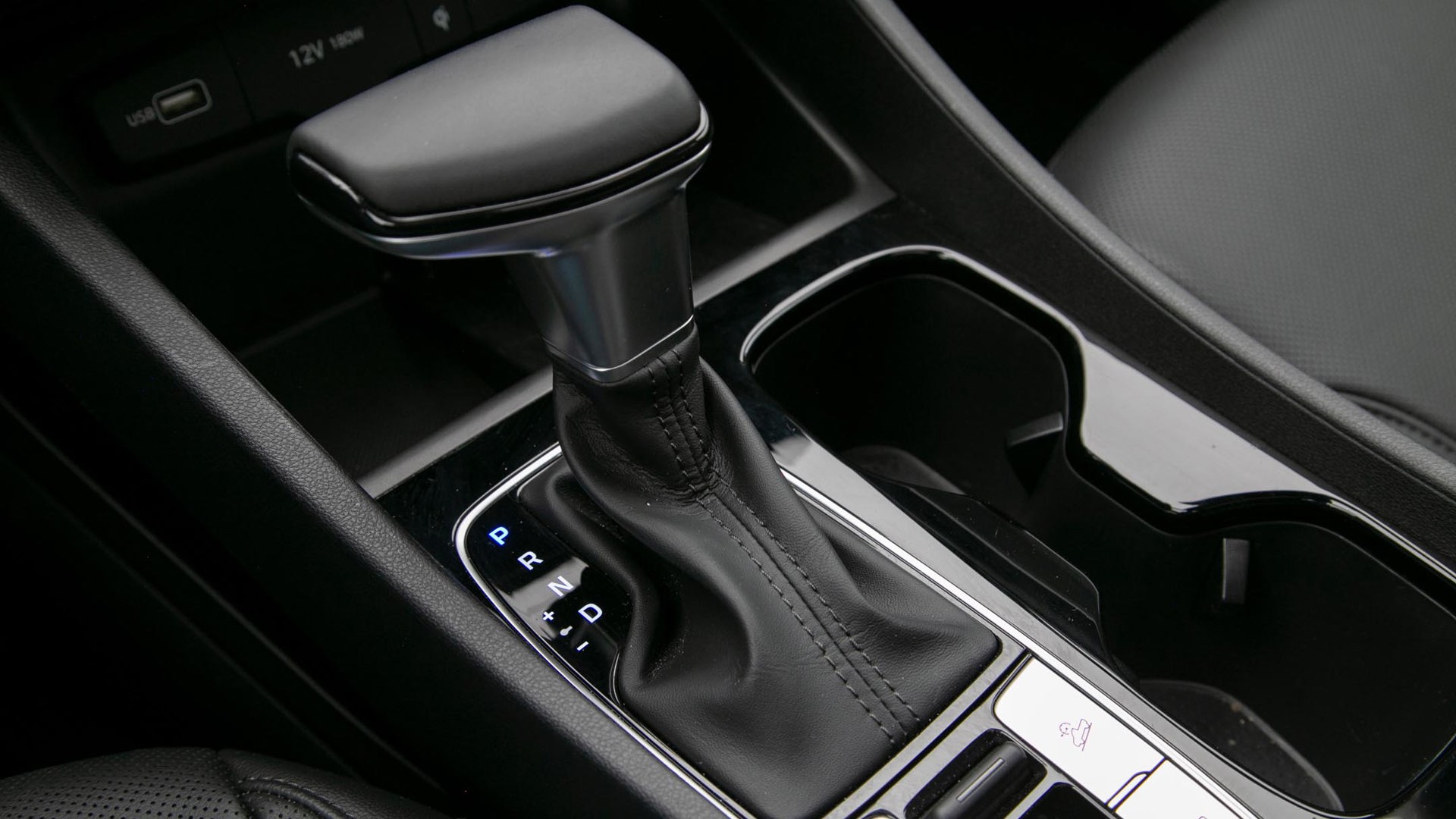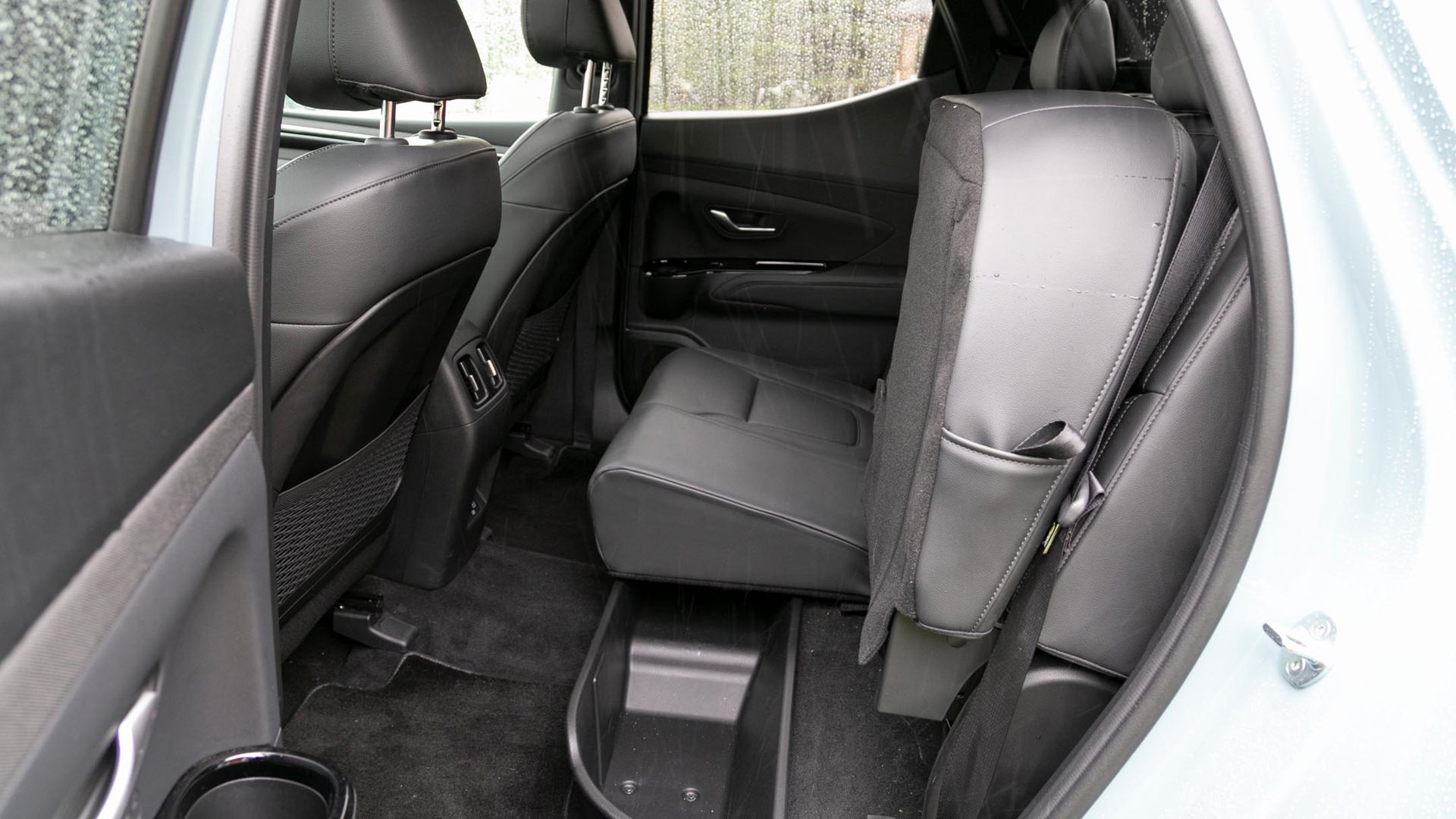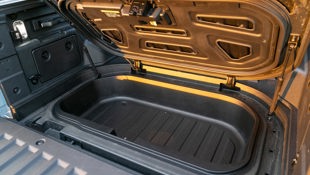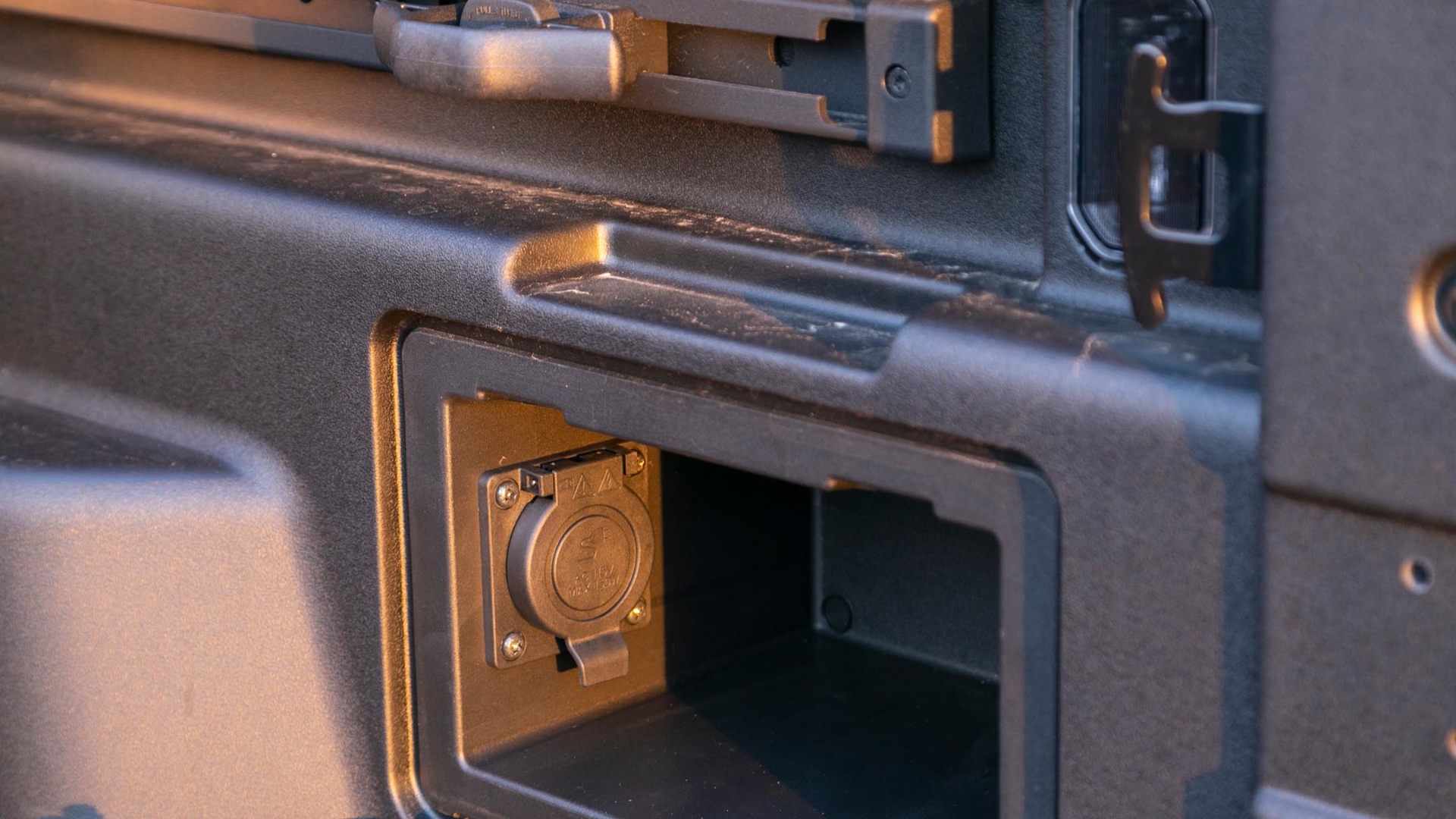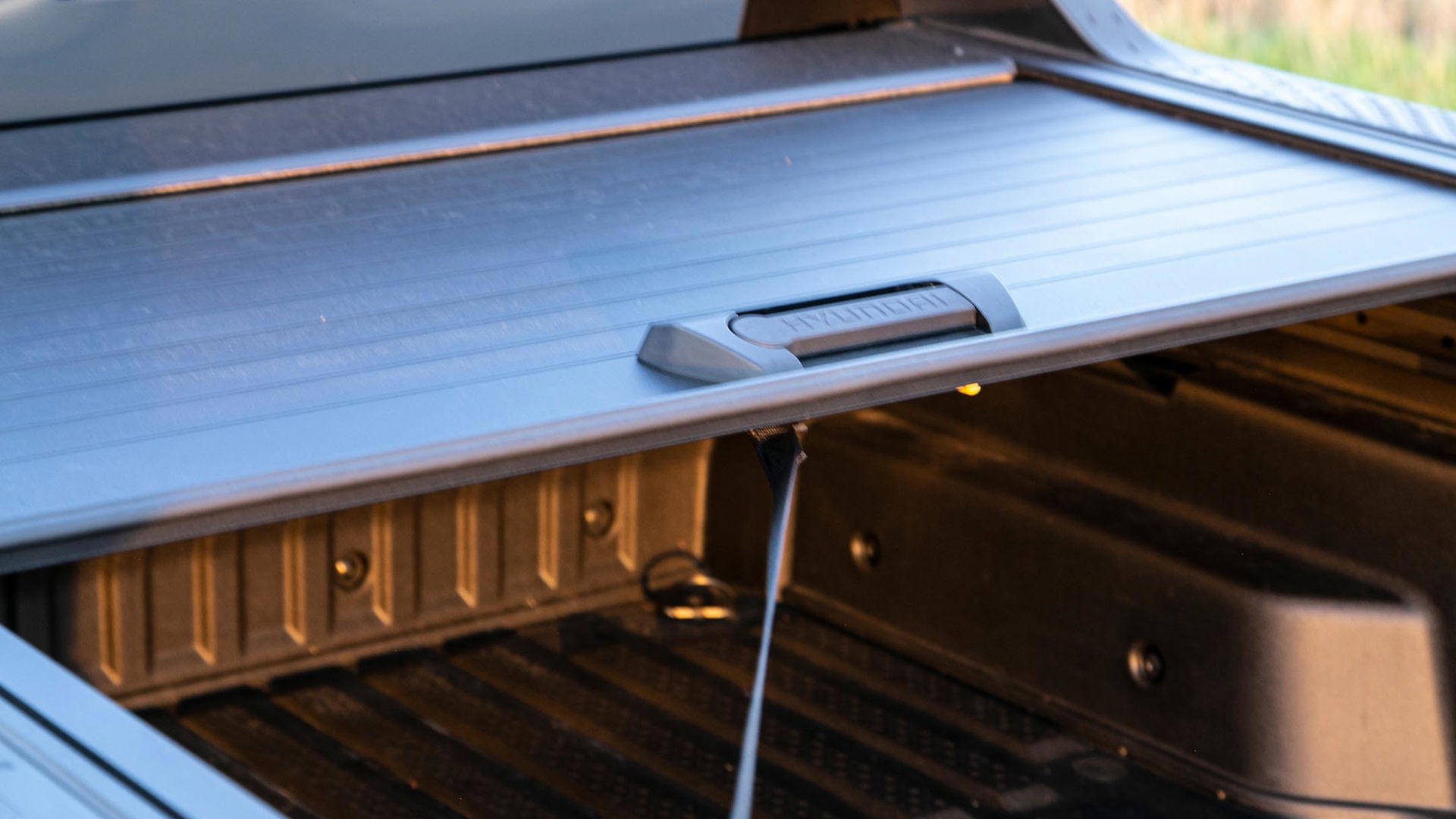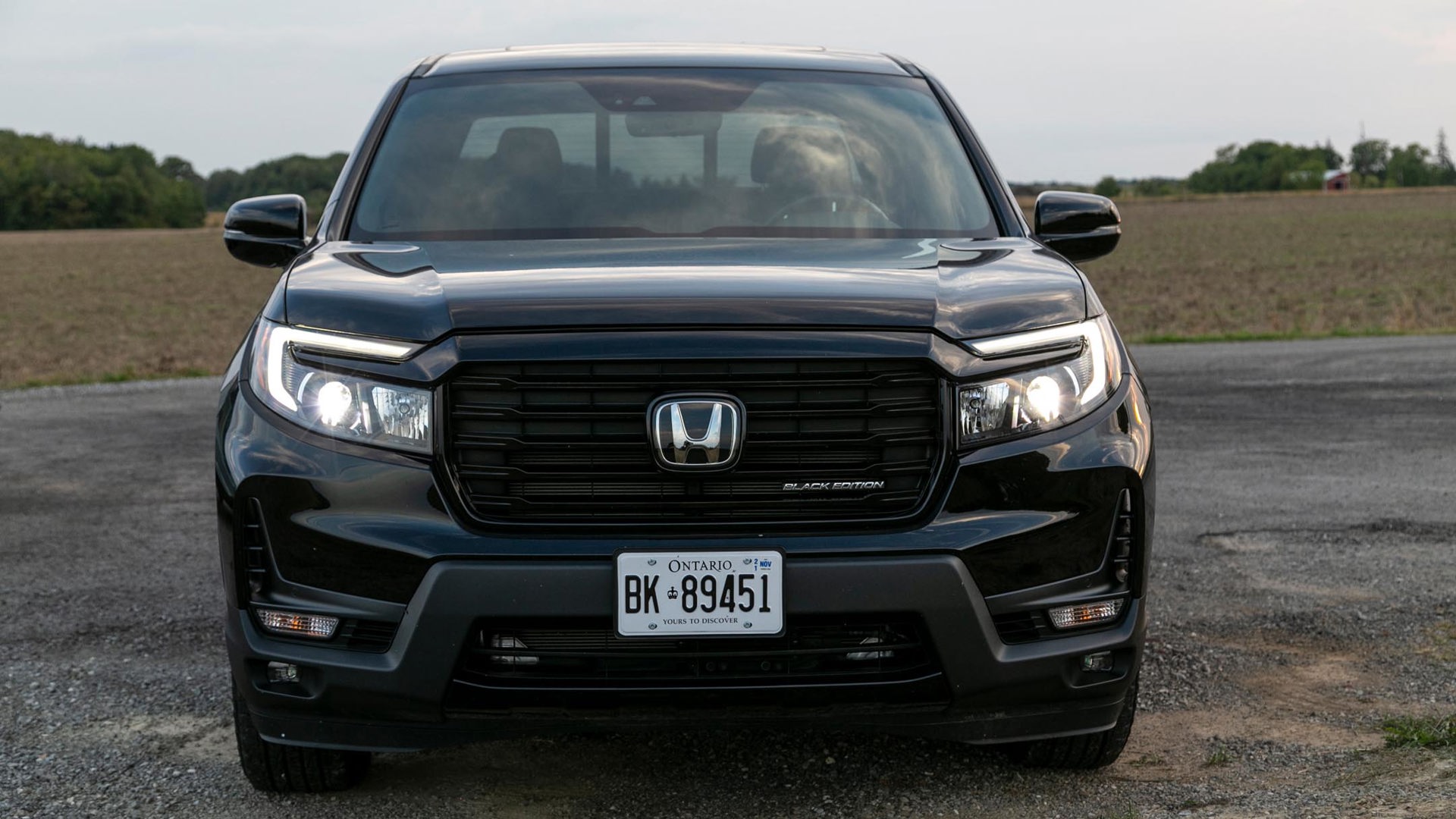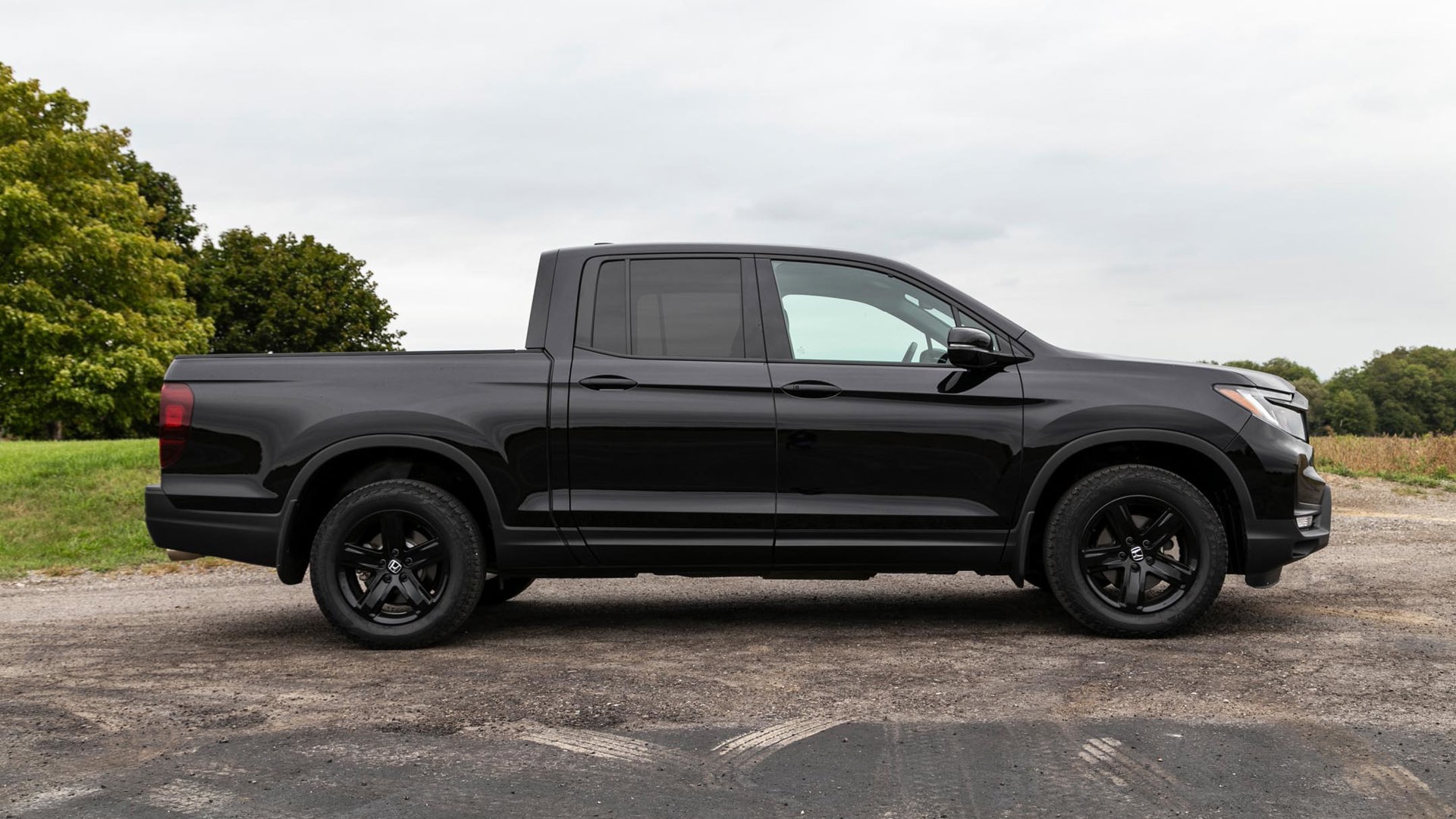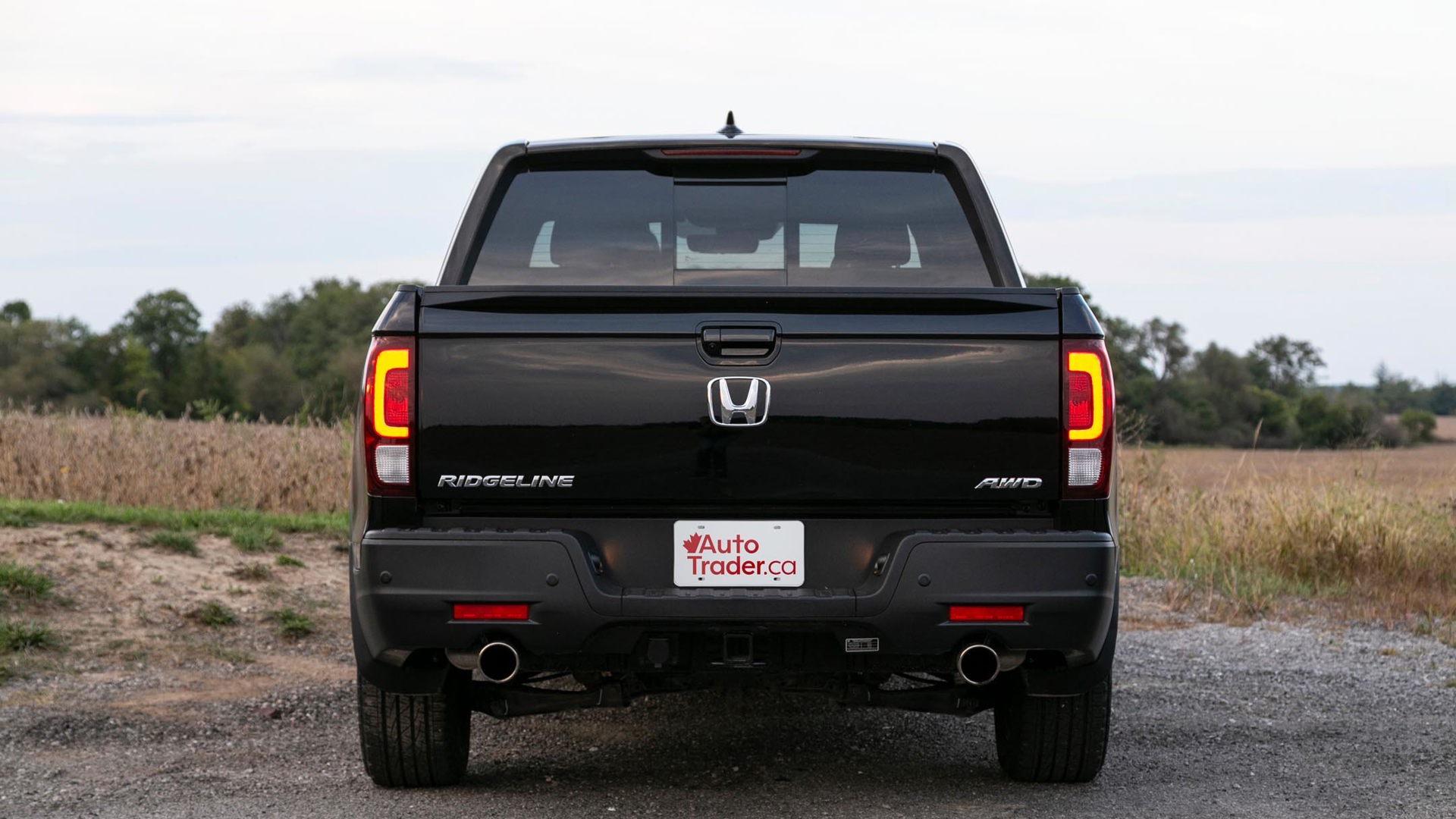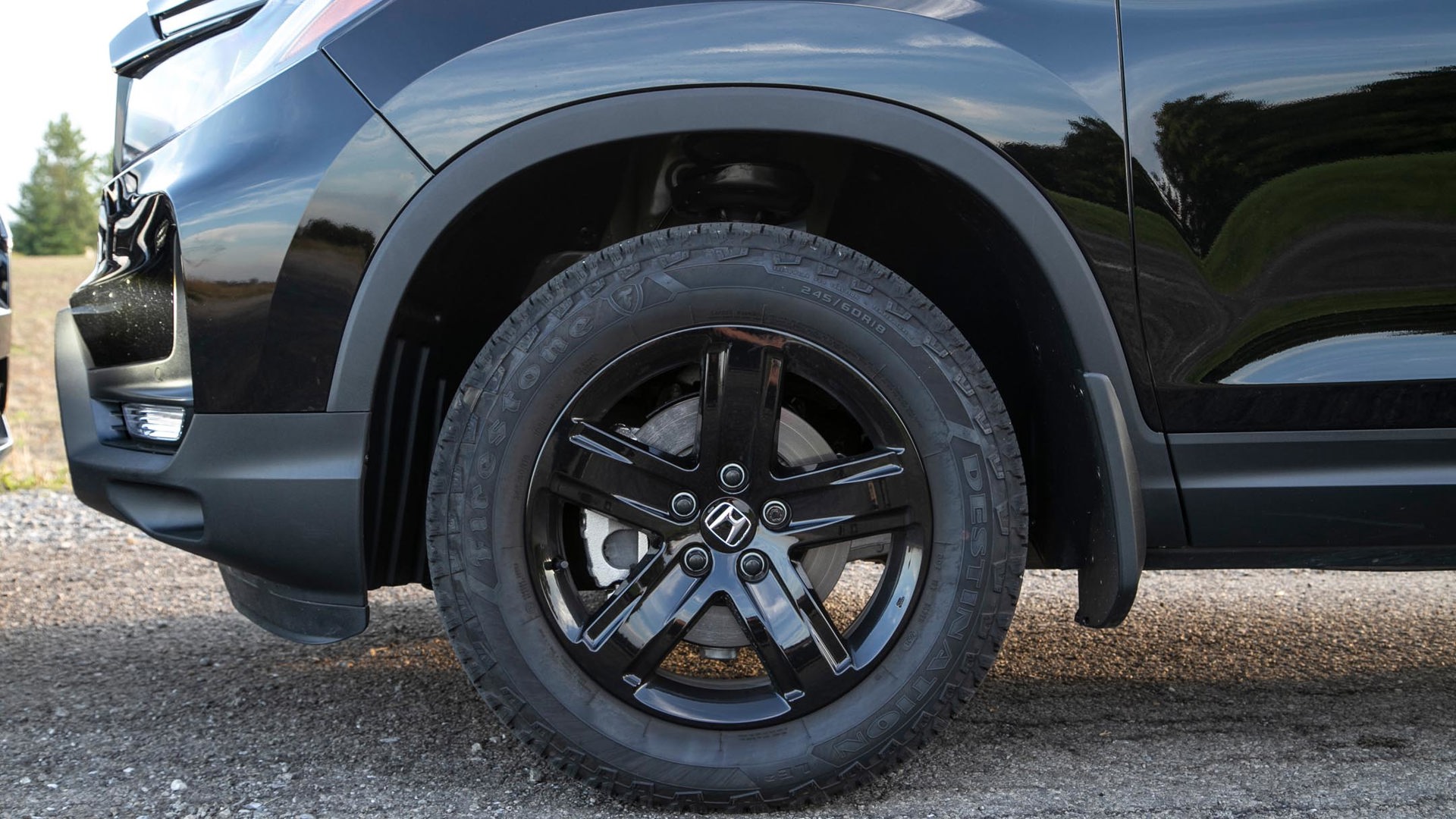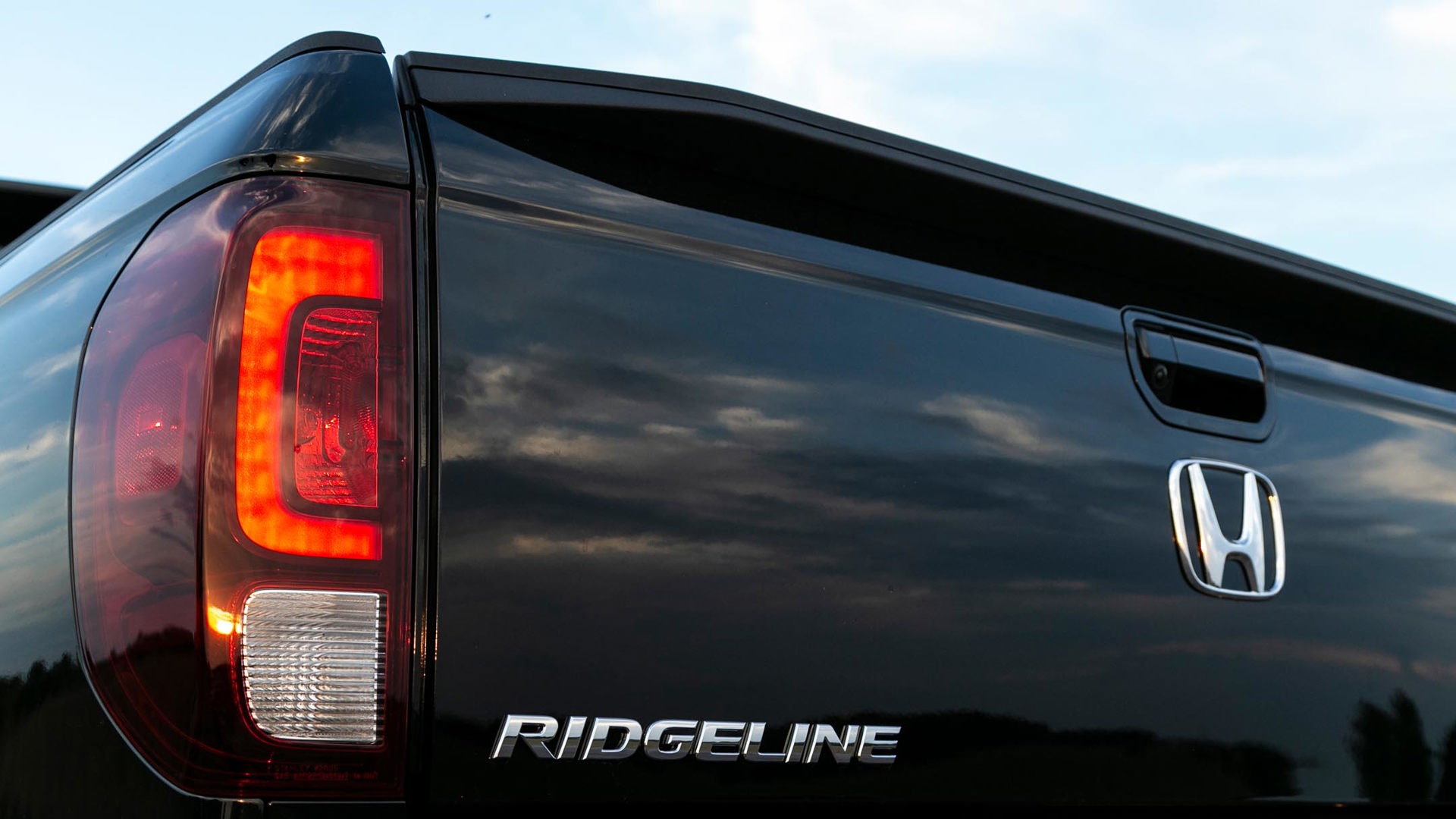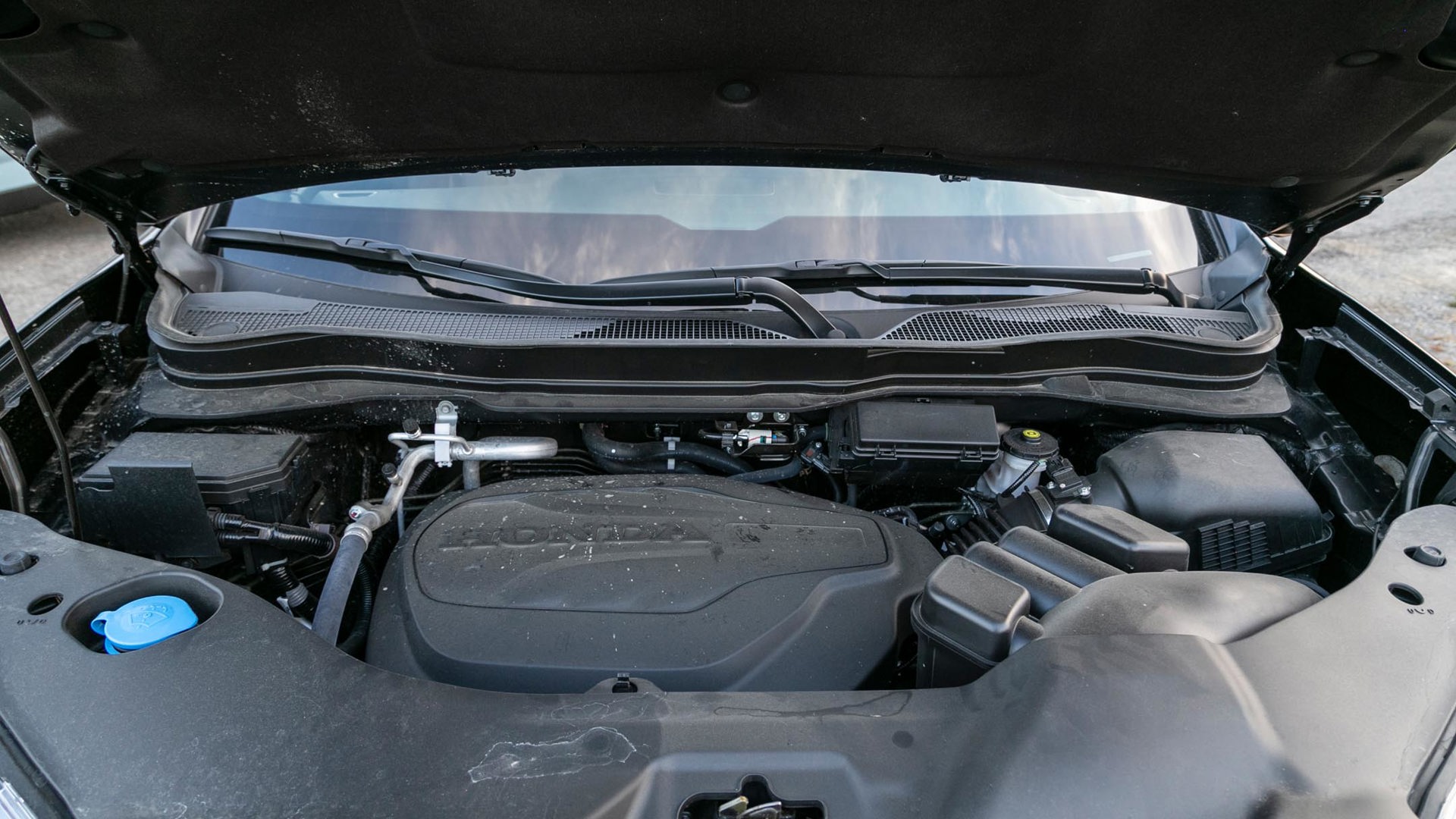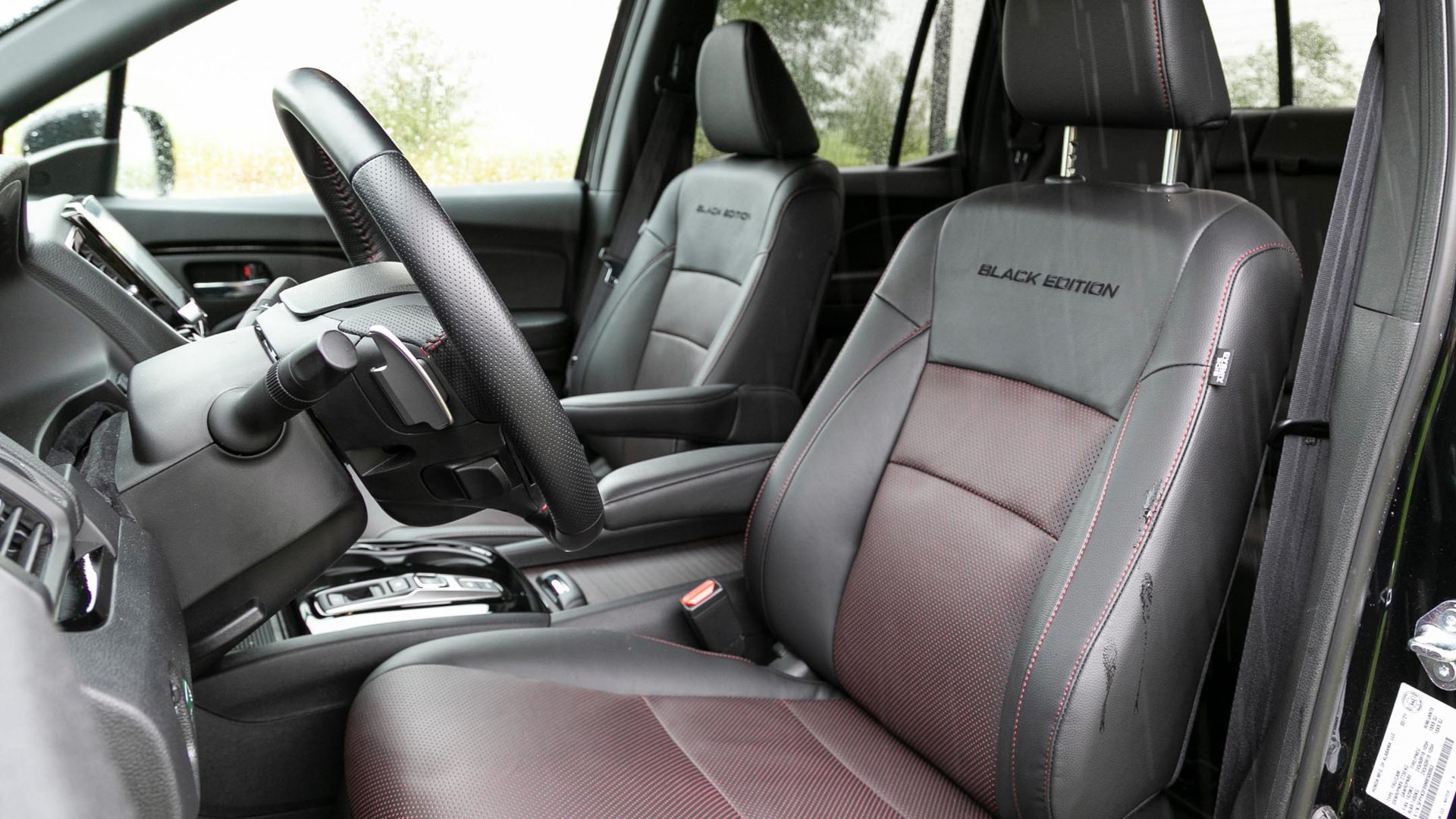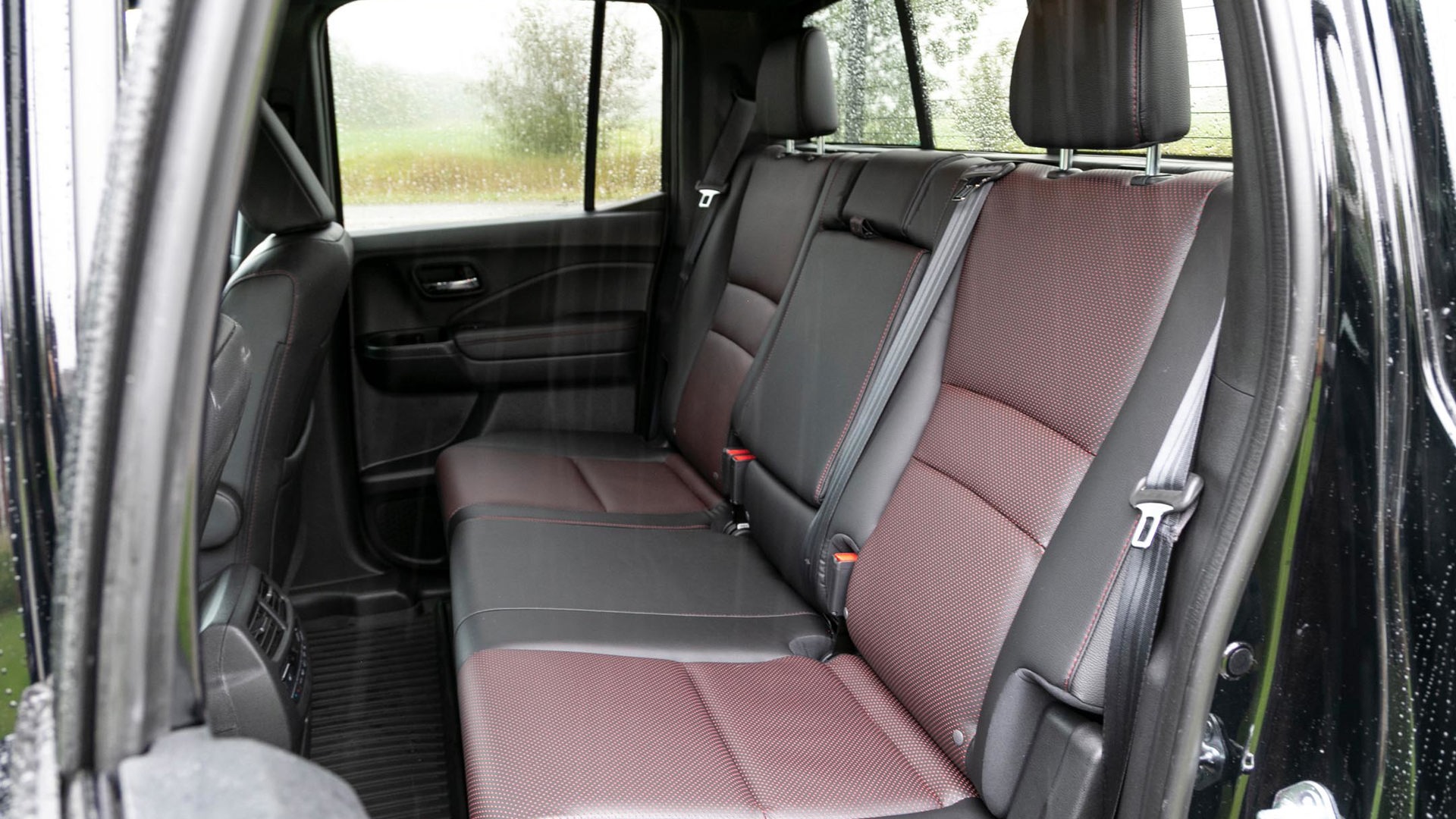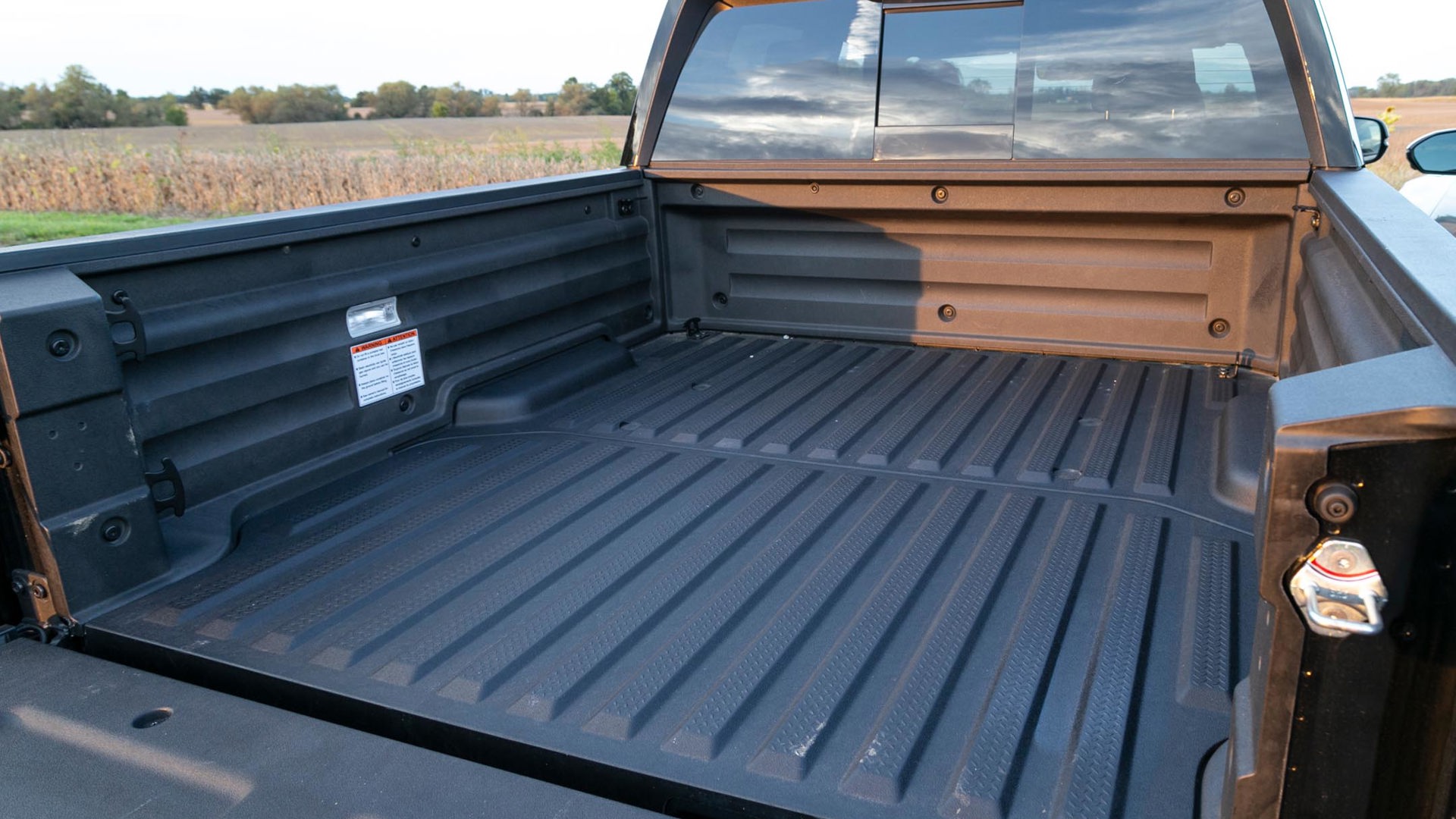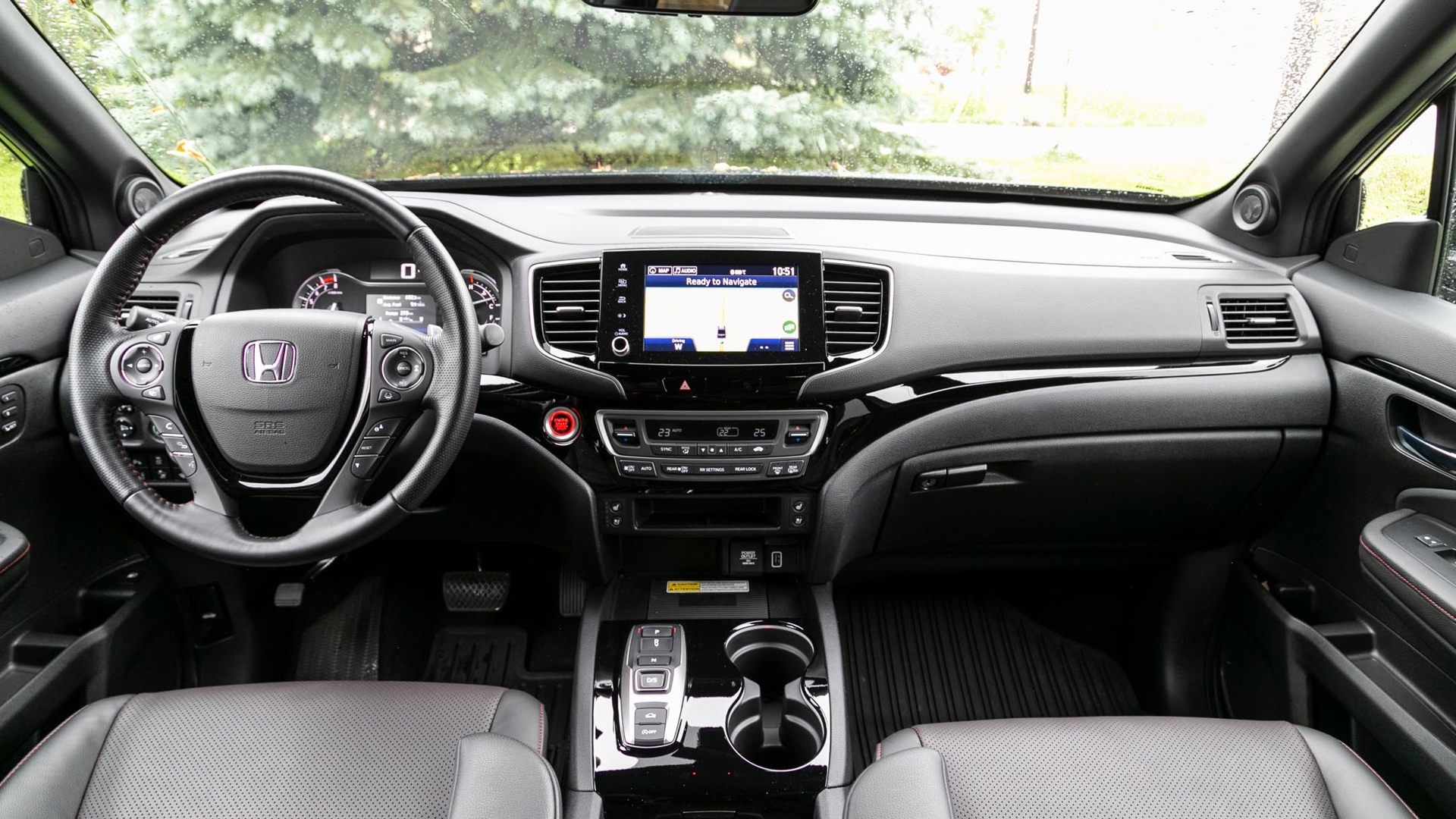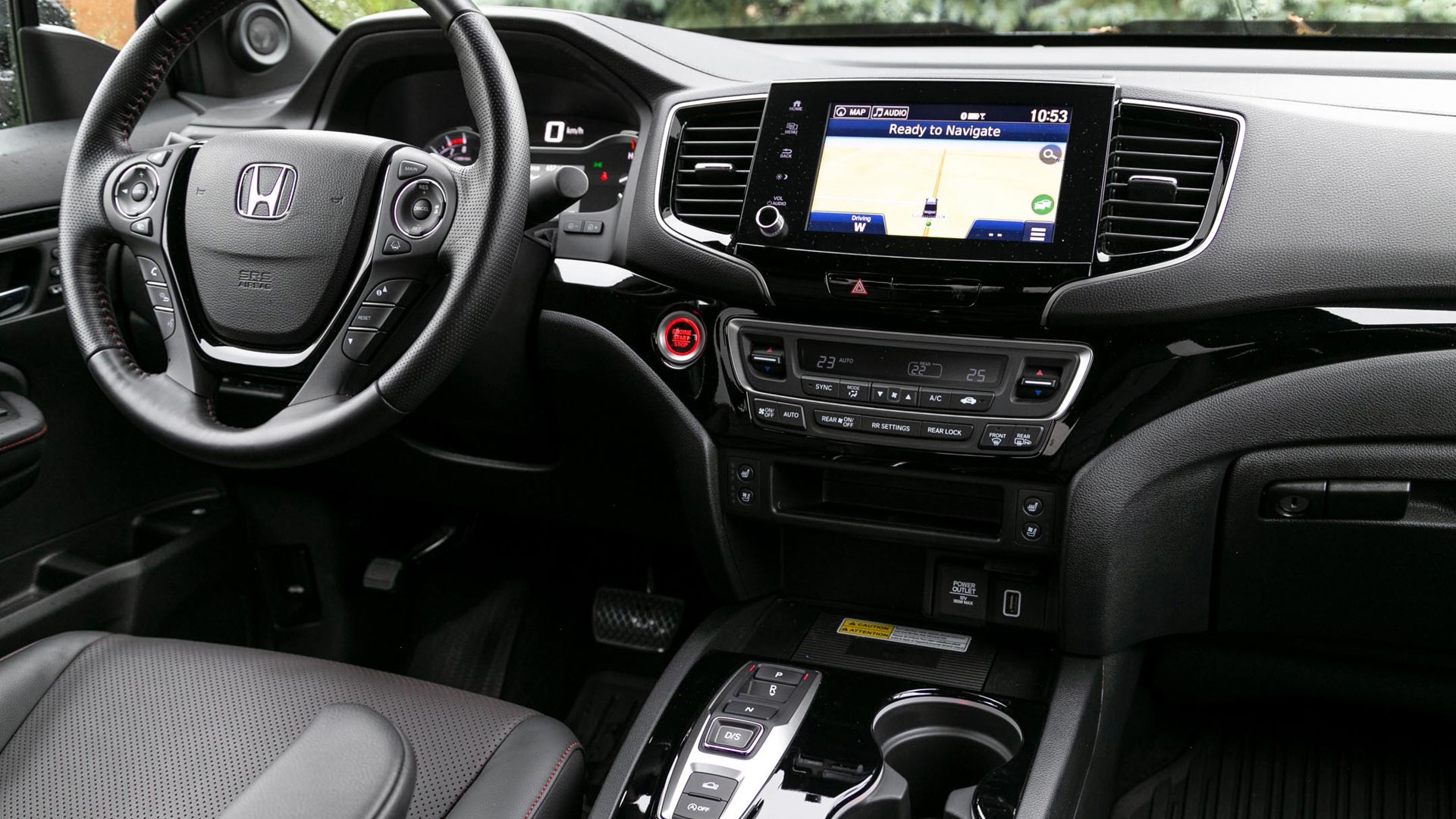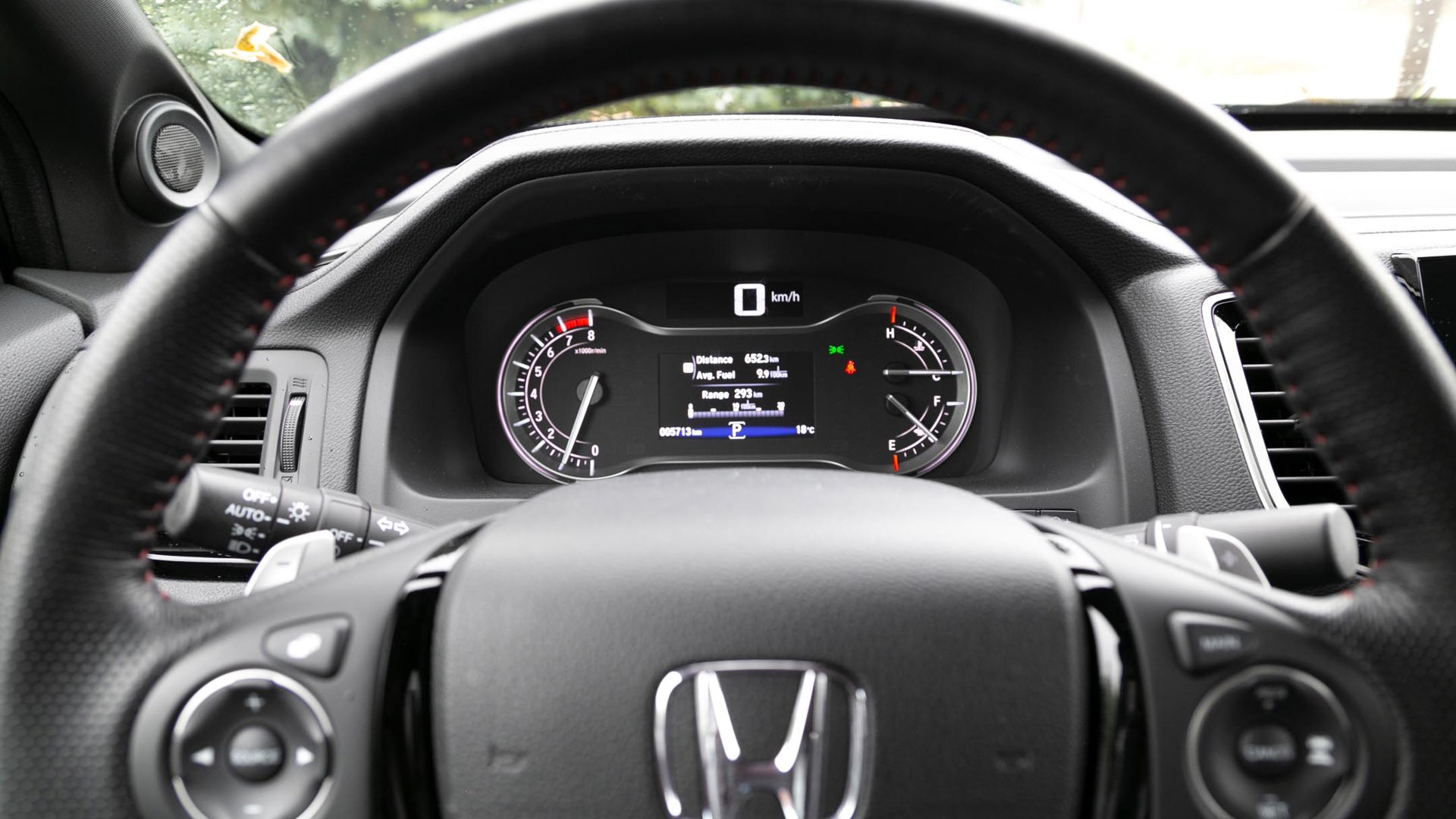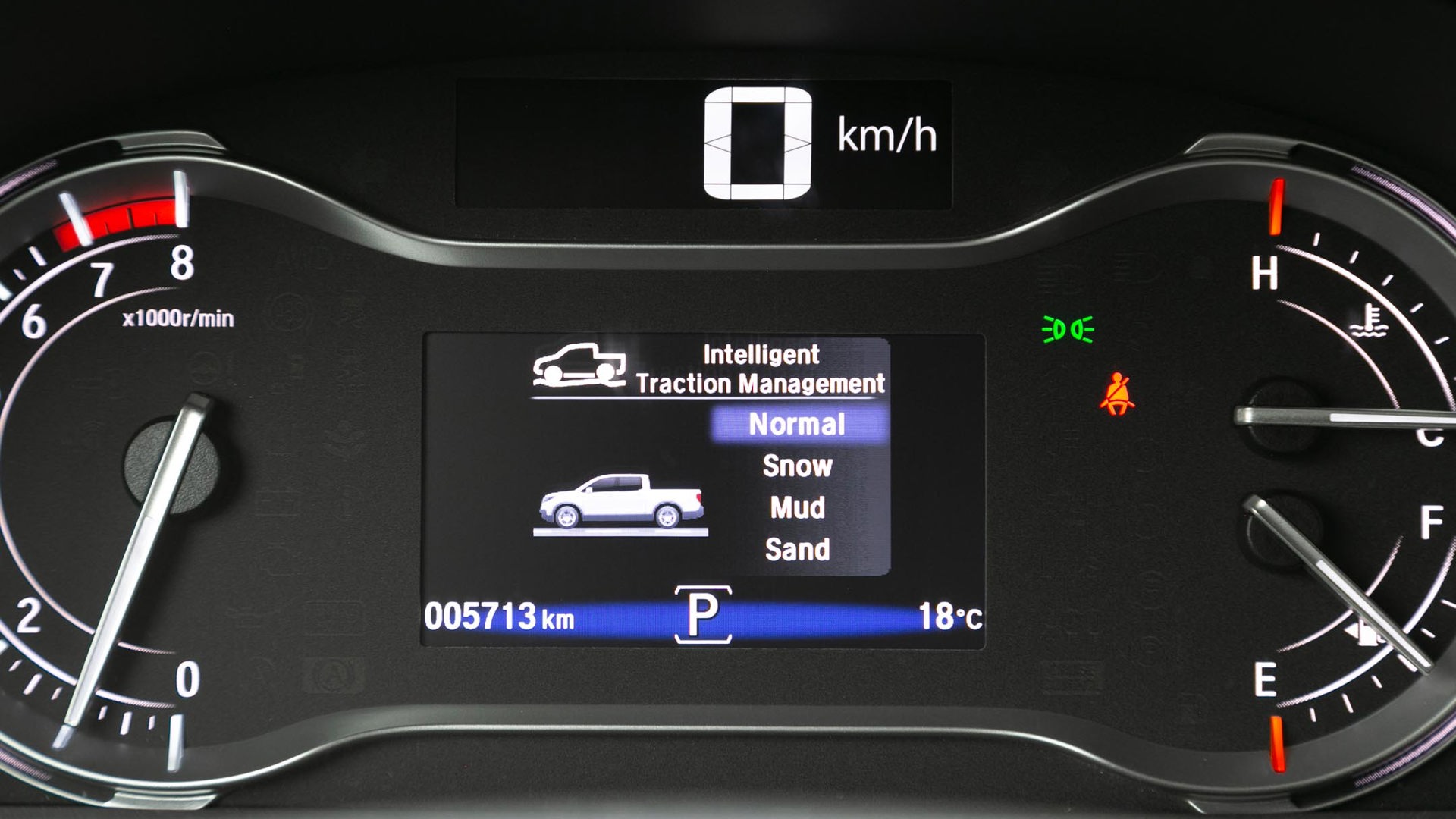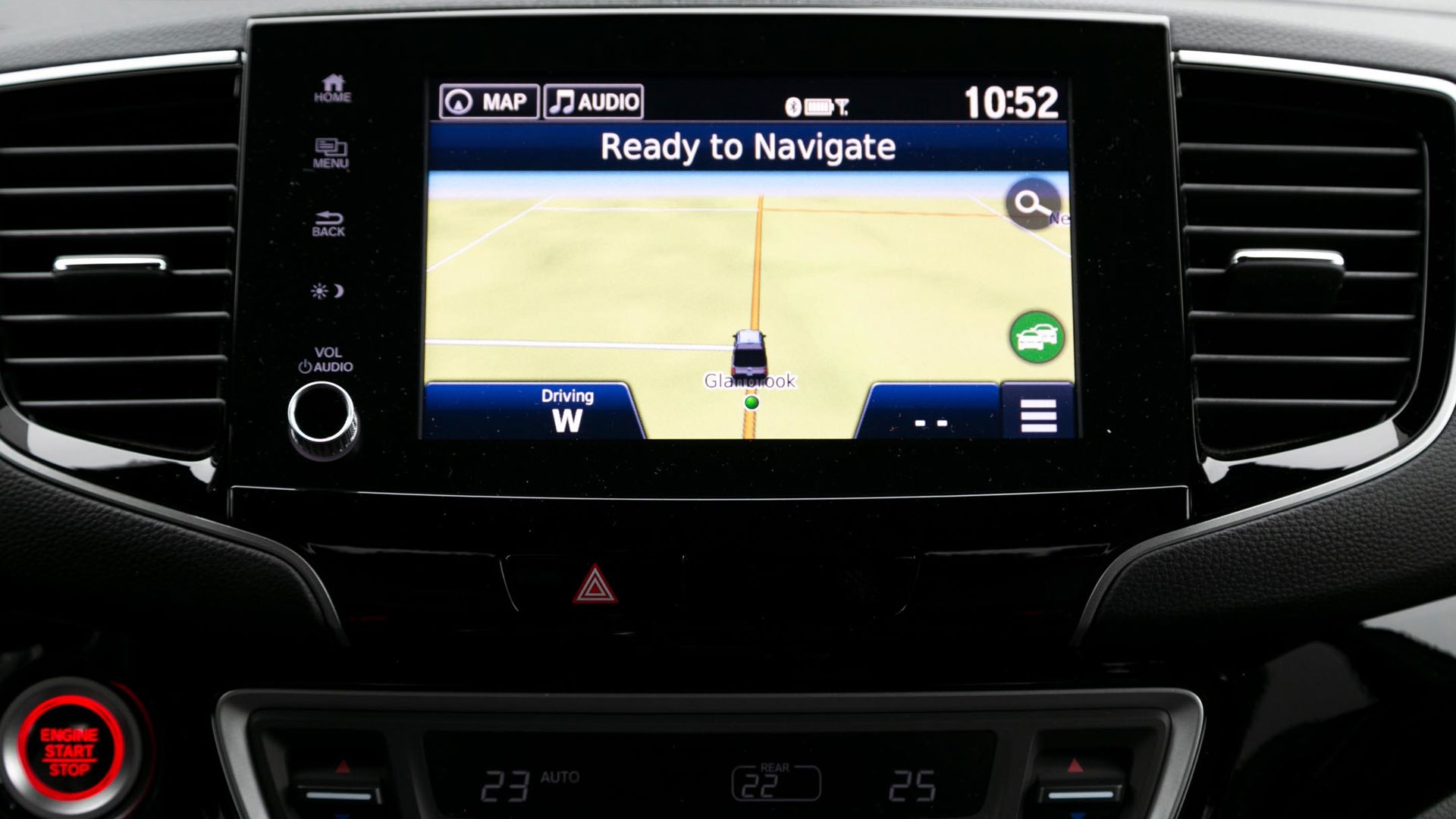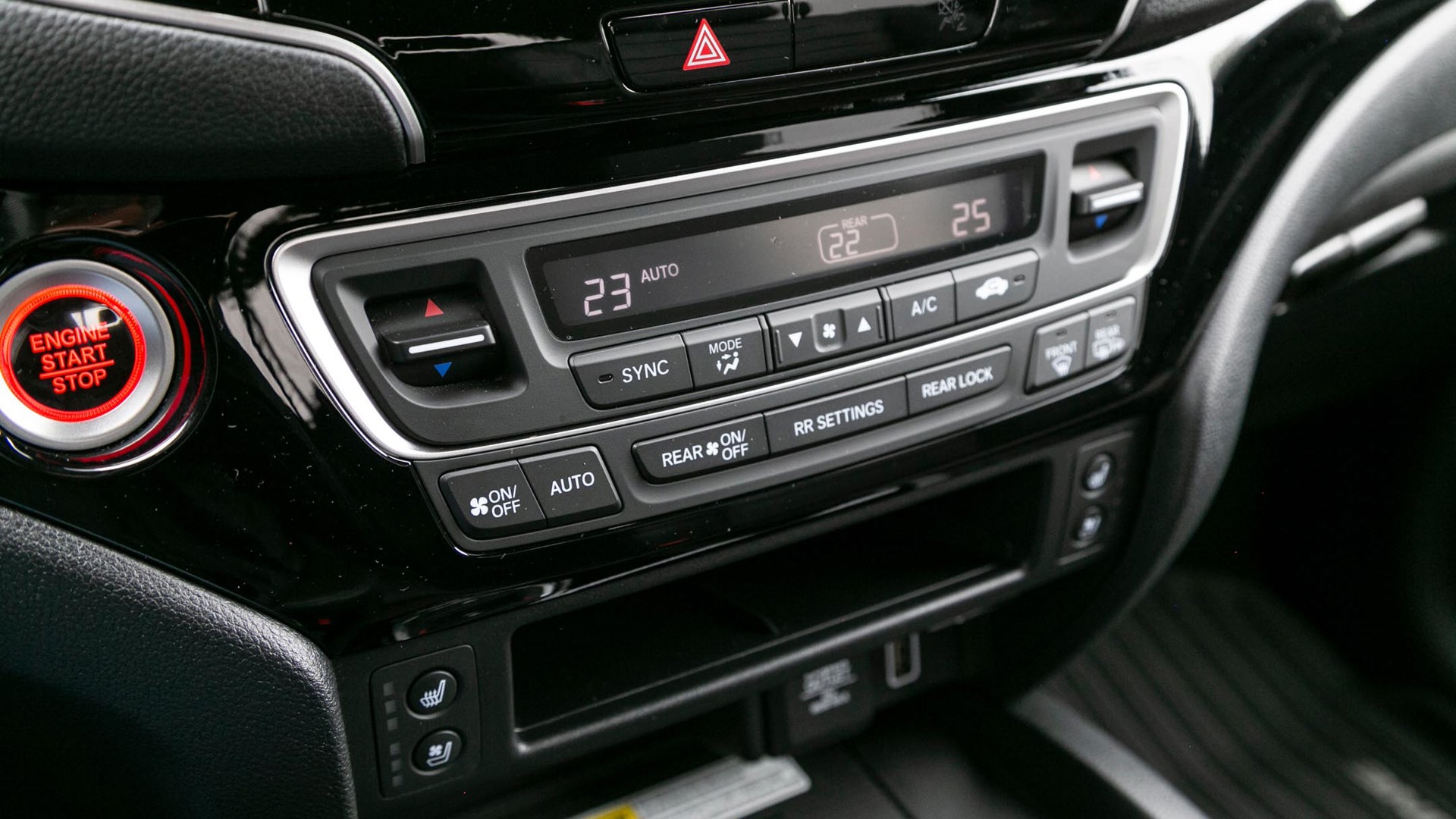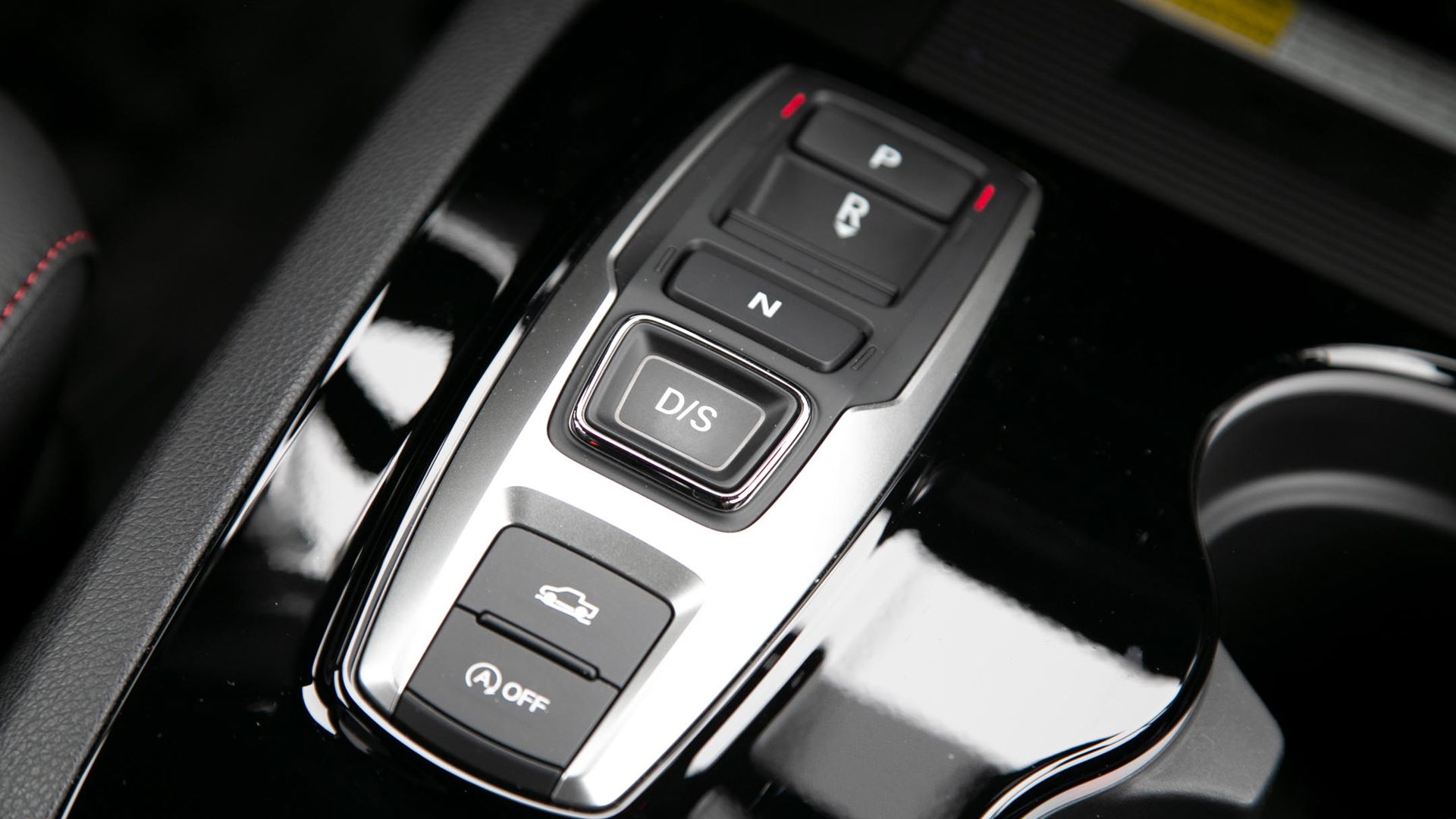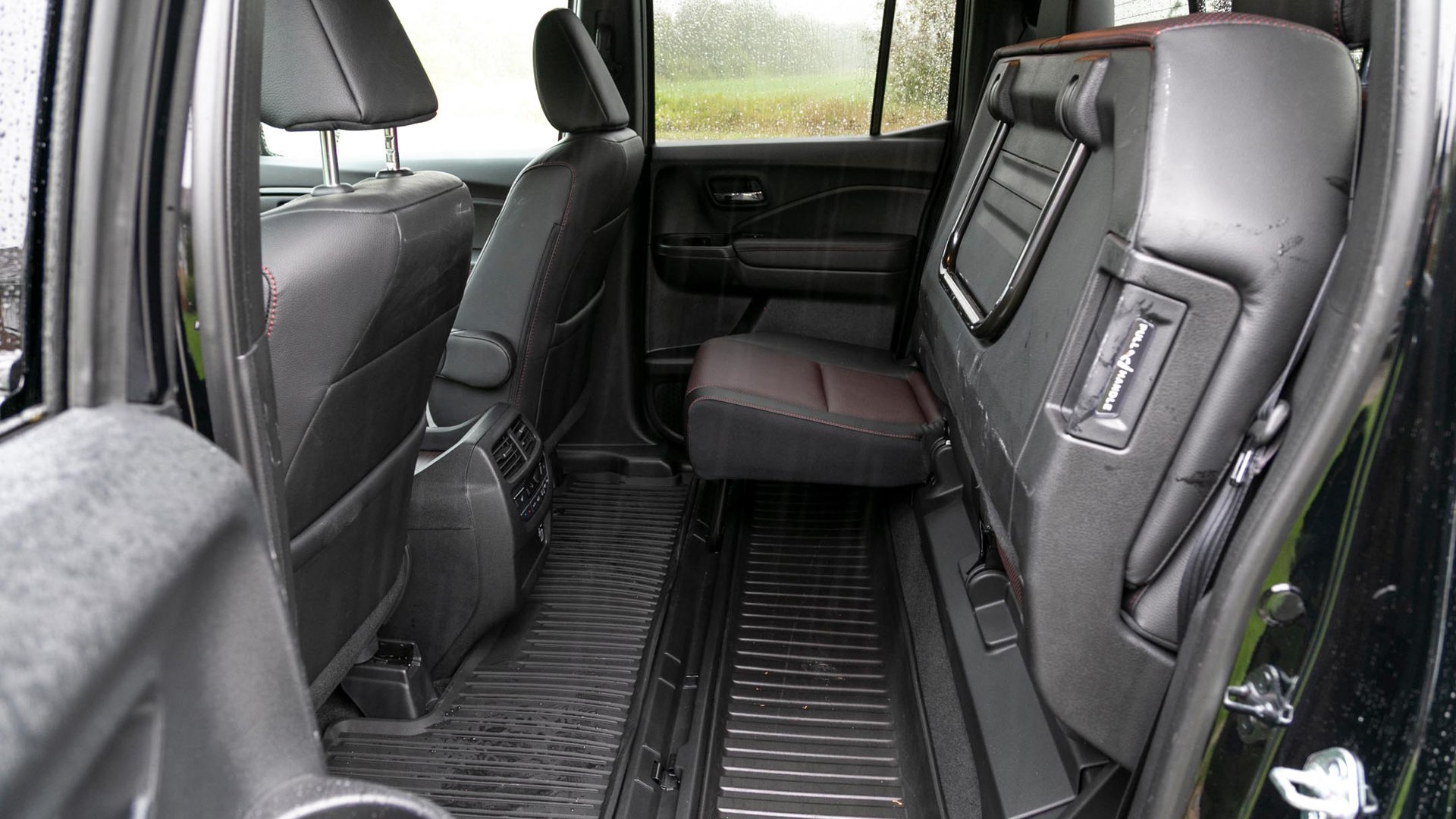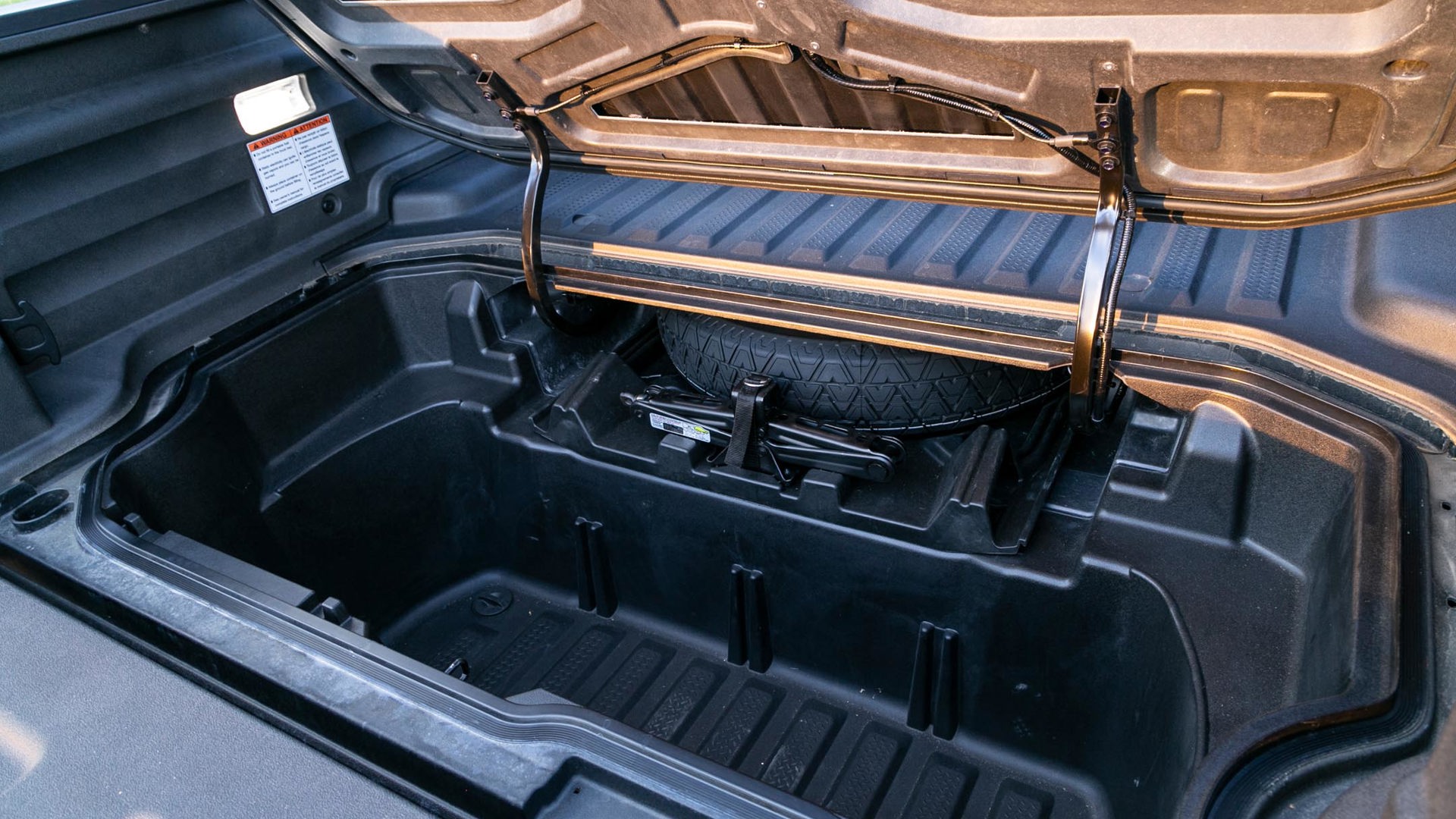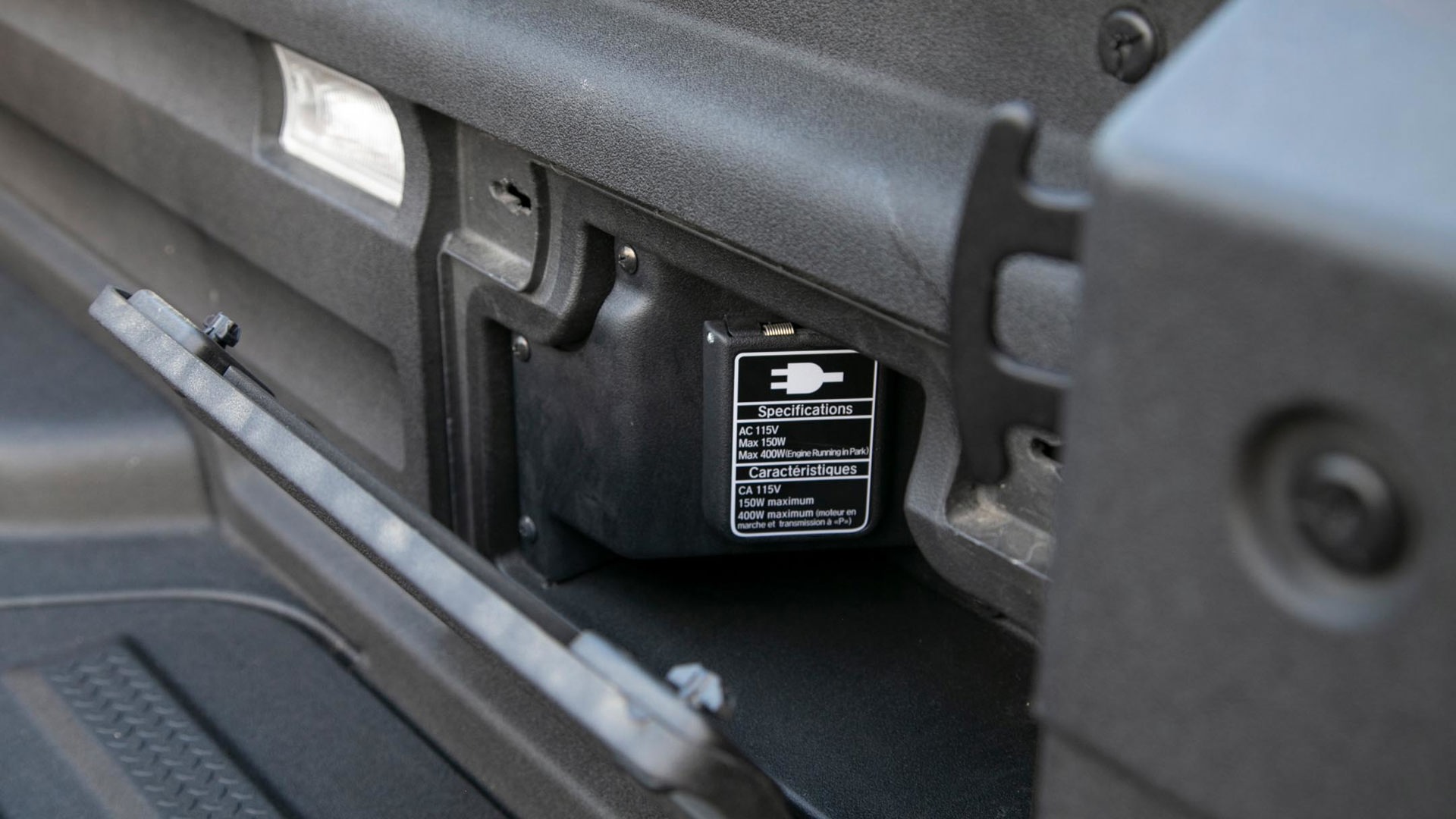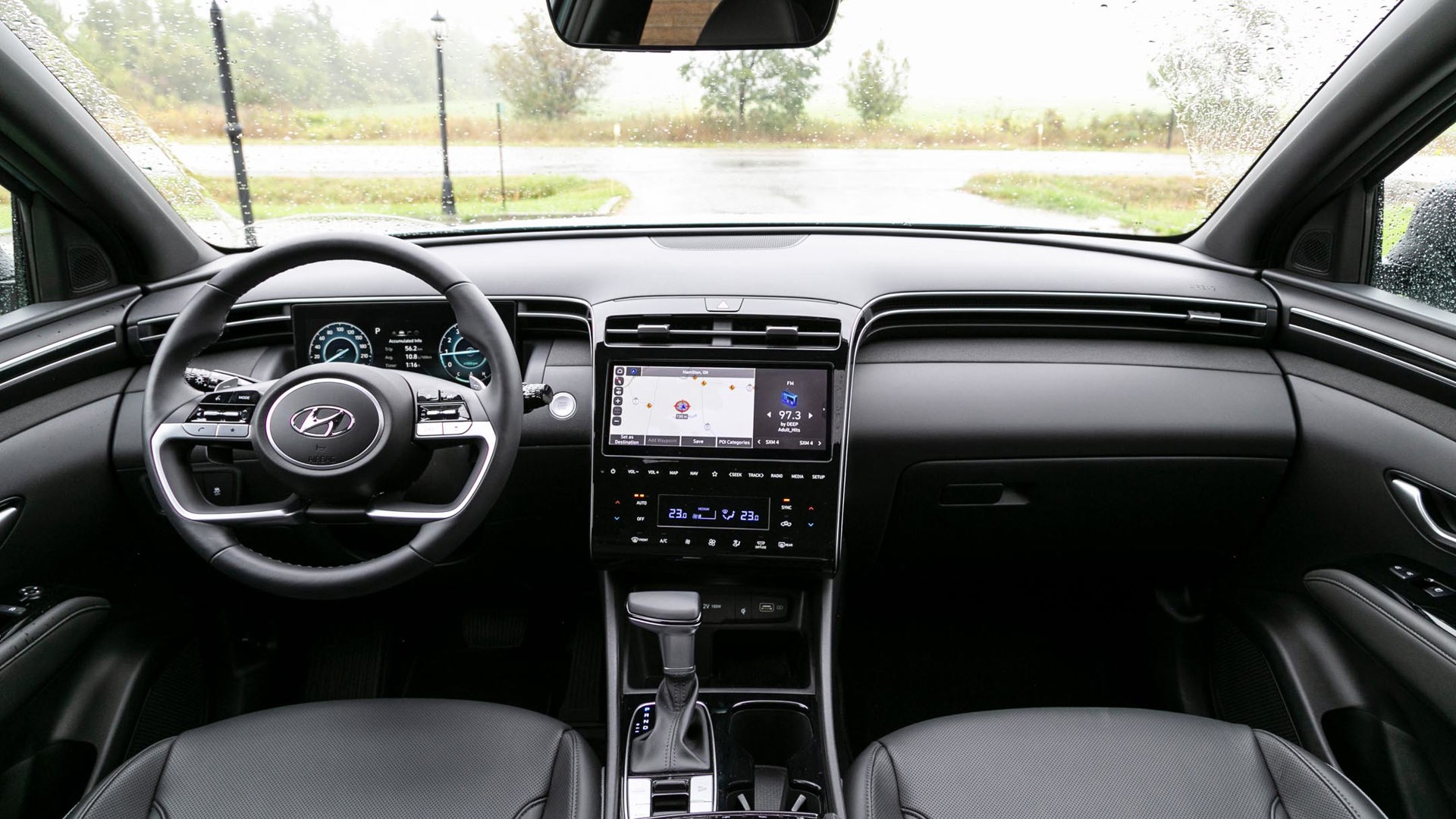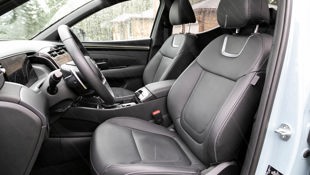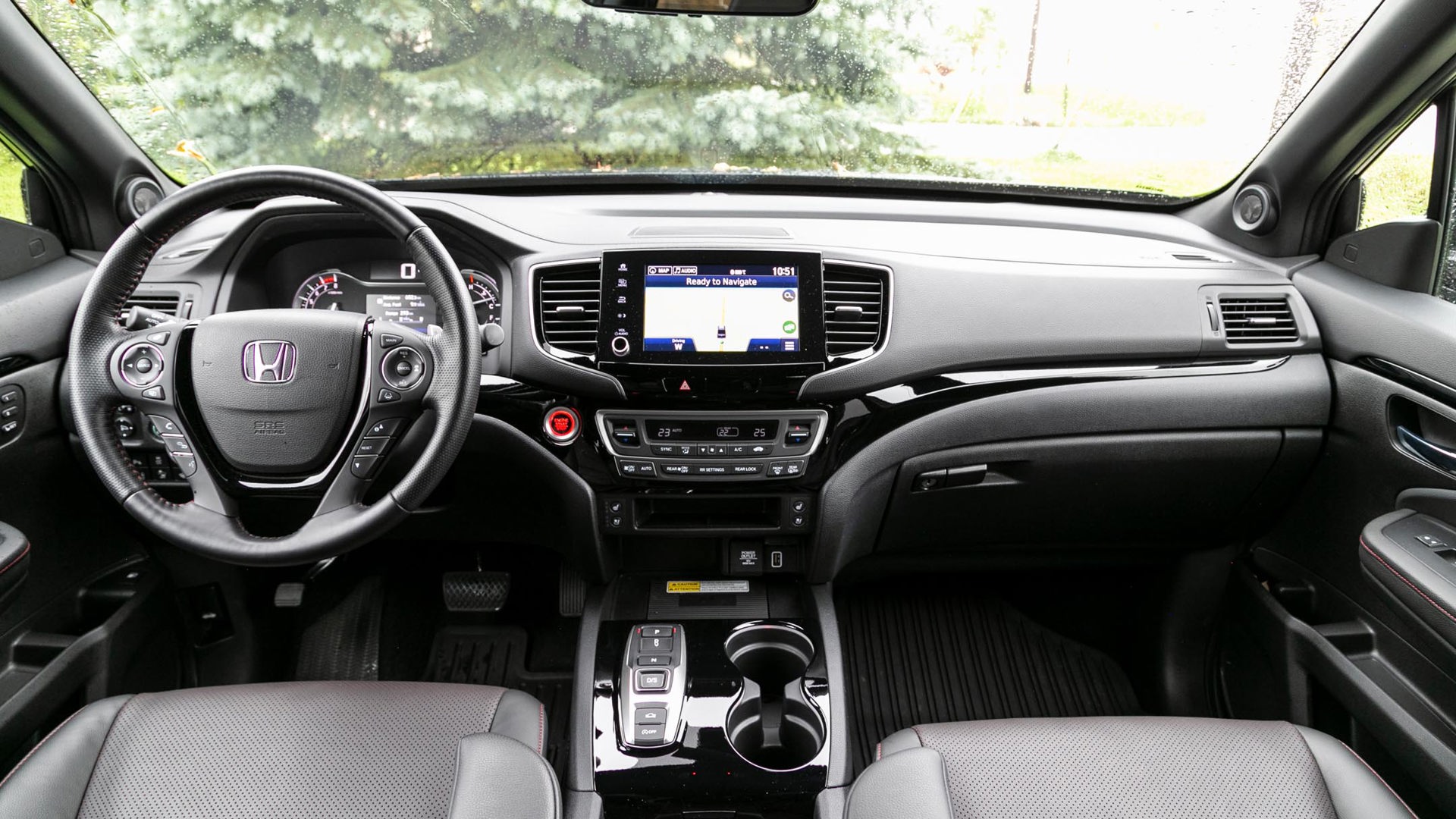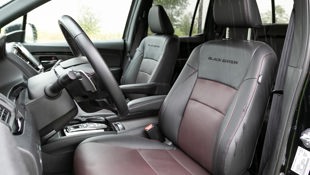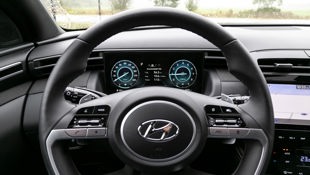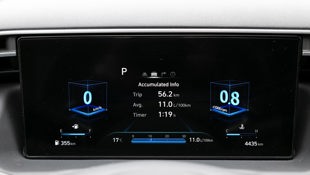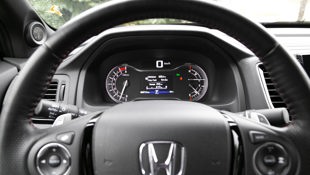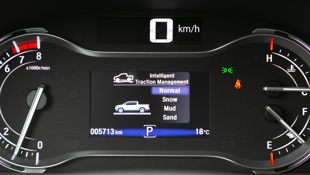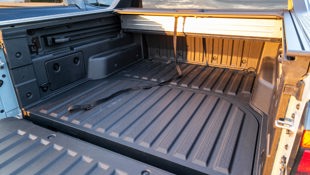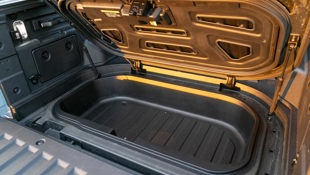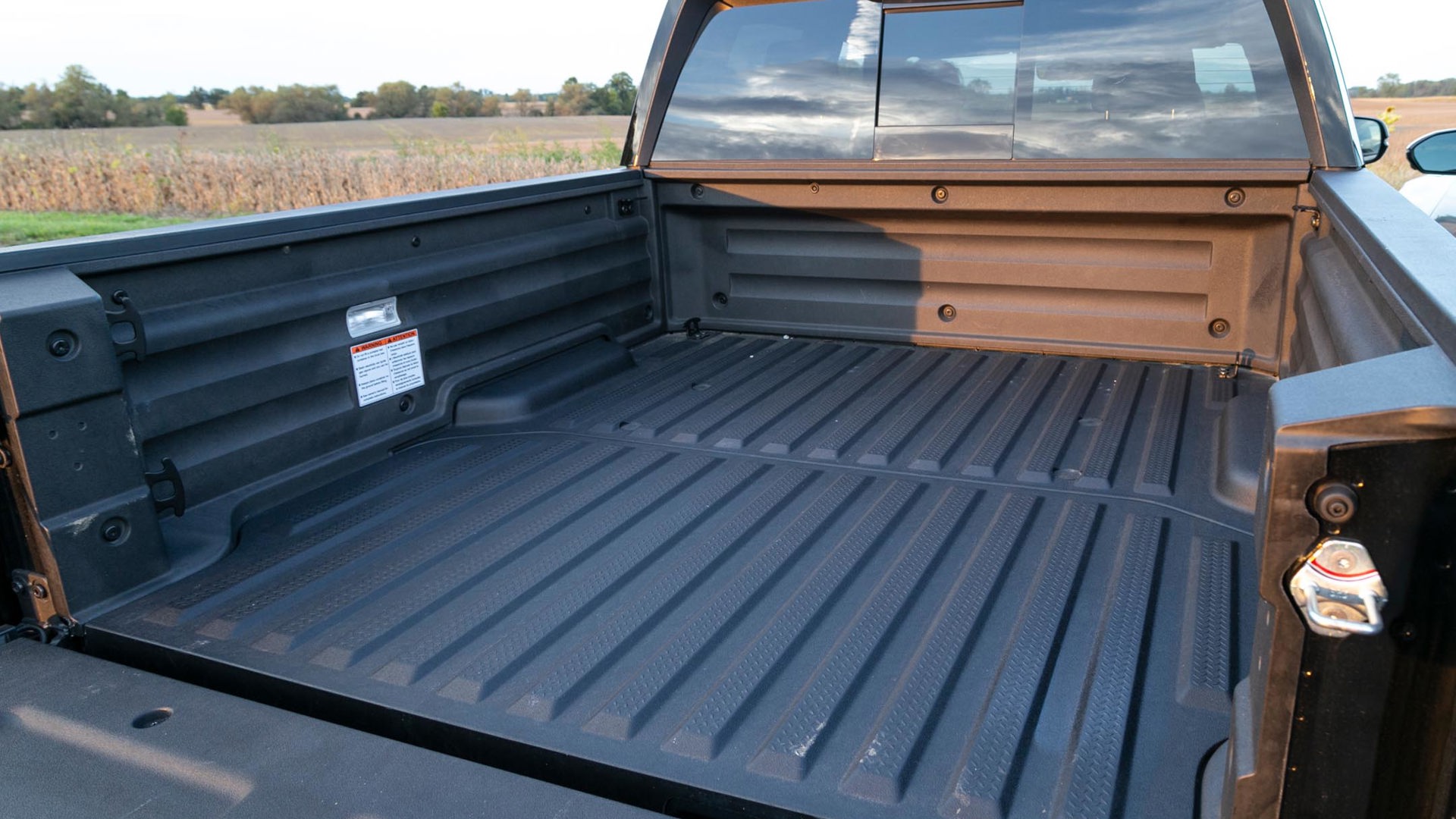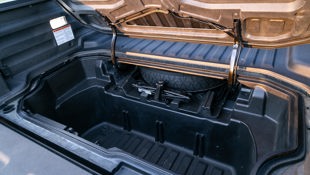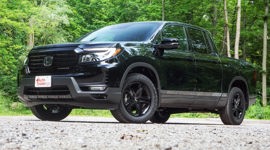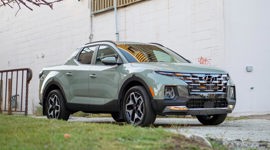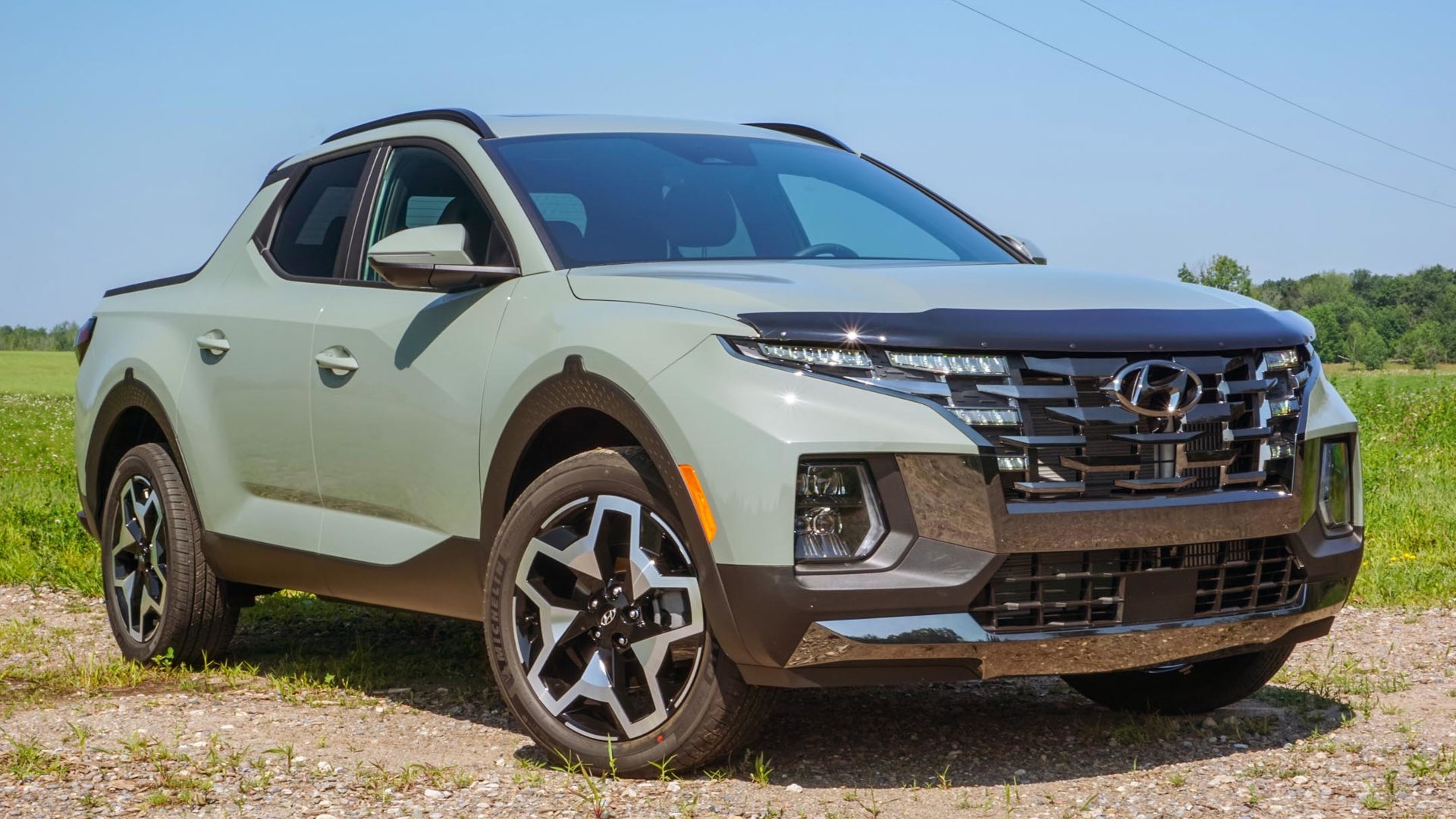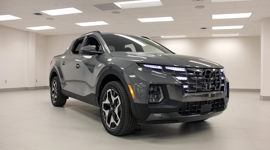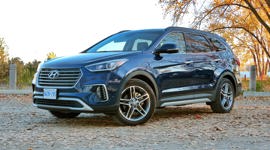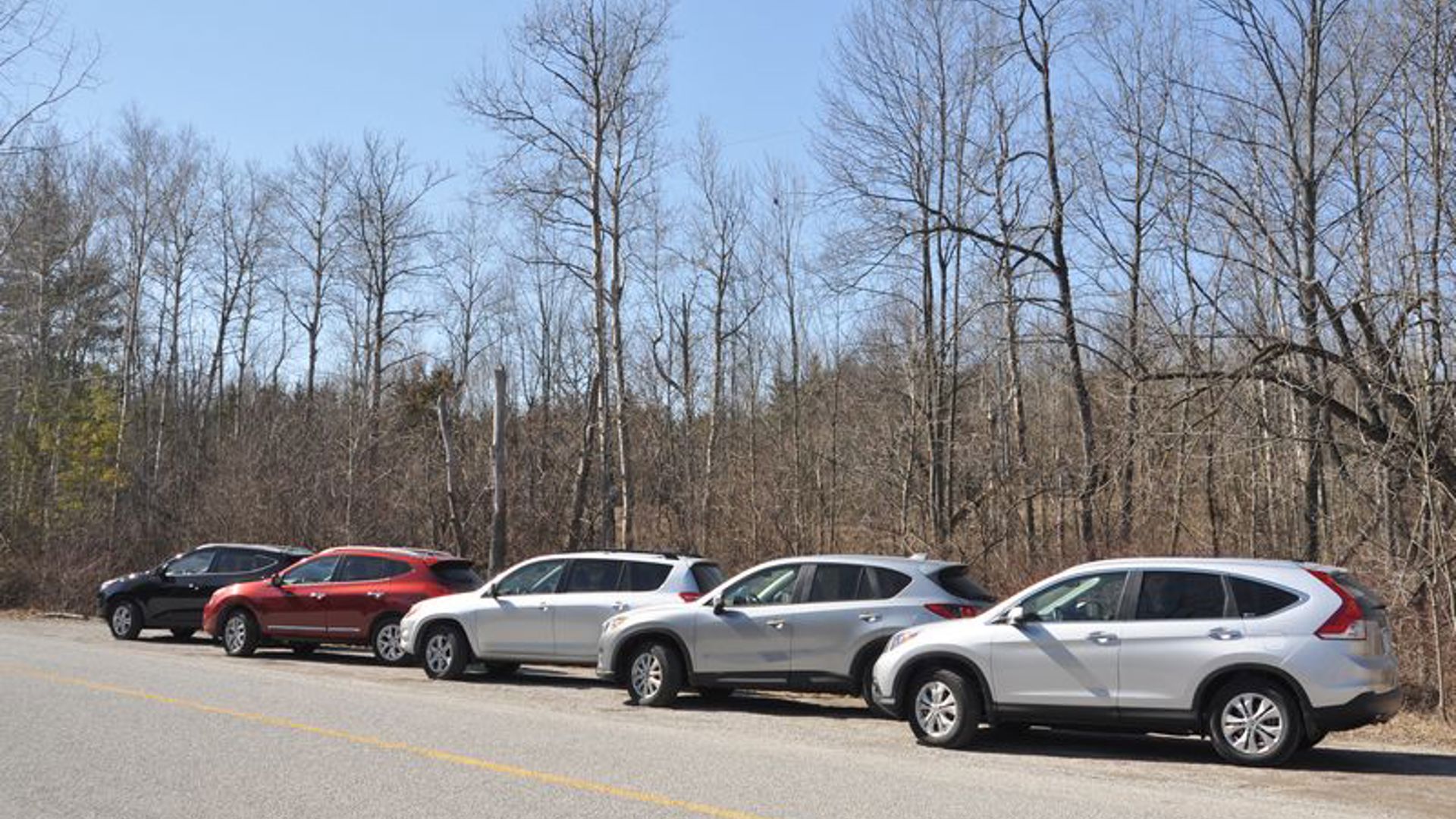Comparison Data
|
2021 Honda Ridgeline Black Edition
|
2022 Hyundai Santa Cruz Ultimate
|
|---|---|
|
Engine Displacement
3.5L
|
2.5L
|
|
Engine Cylinders
V6
|
Turbo I4
|
|
Peak Horsepower
280 hp
|
281 hp
|
|
Peak Torque
262 lb-ft
|
311 lb-ft
|
|
Fuel Economy
12.8 / 9.9 / 11.5 L/100 km cty/hwy/cmb
|
12.1 / 8.6 / 10.6 L/100 km cty/hwy/cmb
|
|
Cargo Space
960 L; 2,268 kg (5,000 lb) towing limit
|
764 L; 2,268 kg (5,000 lb) towing limit
|
|
Base Price
$53,355
|
$44,799
|
|
A/C Tax
$100
|
$100
|
|
Destination Fee
$1,870
|
$1,825
|
|
Price as Tested
$55,325
|
$46,924
|
|
Optional Equipment
None
|
$200 – Blue Stone Paint, $200
|
In the modern auto market, trucks lead the way.
Sure, there are more SUVs to choose from; and they’re incredibly popular. But the Ford F-150 is poised to capture its 40th consecutive title as the best-selling vehicle in North America. Next on the list is the Ram 1500, with the Chevrolet Silverado and its mechanical twin, the GMC Sierra, rounding out the top five.
Trucks are big business, and because of it, the auto industry has spawned an infinite number of variations on the theme, covering everything from basic work trucks to sensationally powerful desert runners, and, of course, those capable of enormous feats of towing strength.
But the two machines you see here are not trucks. Sure, they may have open beds to carry stuff; and in many ways they resemble pickup trucks. But the venerable Honda Ridgeline and all-new 2022 Hyundai Santa Cruz don’t use the classic body-on-frame construction of a typical truck. Instead, they more closely resemble the Australian ute – passenger cars that happen to have beds around back. [Of course, as AutoTrader.ca Editor-in-Chief Jodi Lai noted in her recent review of the Santa Cruz, a pickup truck is defined as a vehicle with “an enclosed cab and an open body with low sides and a tailgate.” – Ed.]
The size difference between these two is notable, and we would’ve loved to slot the forthcoming Ford Maverick between them in this test, but alas, it wasn’t available in time. Either way, we’re considering the capabilities of the 2022 Hyundai Santa Cruz and the 2021 Honda Ridgeline from the perspective of outright utility, as well as drivability.
Practicality
On paper, the 2022 Hyundai Santa Cruz fares well. Its maximum payload of 732 kg (1,613 lb) bests the Ridgeline’s 674 kg (1,486 lb), and the maximum tow rating is the same 2,268 kg (5,000 lb) for both trucks. They both have seating for five people with reasonable space inside, too.
The usability of these machines has a lot to do with their ability to actually carry stuff – not just based on mass, but volume, too. And to that end, the Honda’s larger dimensions give it an advantage over the Hyundai. At 1,625 mm (64 in), the Ridgeline’s box is nearly 400 mm longer than the Santa Cruz’s, but it’s the extra 185 mm of width between the wheel wells that made me choose the Ridgeline over the Santa Cruz when it came time to collect some patio furniture. A glass table measuring 1,219 mm (48 in) wide nestled perfectly between the barely-there wheel wells, as opposed to being perched atop the Hyundai’s.
What’s more, the larger rear seating area (and boxier rear door opening) meant four patio chairs fit inside the cabin, rather than needing to be strapped down in the open bed. The same could not be achieved with the Hyundai’s smaller cabin.
If off-road travel is a consideration, the Santa Cruz’s 218-mm (8.6-in) minimum ground clearance is greater than the Ridgeline’s 194 mm (7.6 in), and while the Honda has a better approach angle, the Hyundai is less likely to bump its butt on the departure angle. Honda has at least fitted some Firestone Destination all-terrain tires, though more likely for their rugged appearance than any real off-road application. The Santa Cruz’s car-like touring tires are more indicative of the amount of rock-climbing these things are made for (the answer should be “none” given their lack of skid plates or under body armour).
Hyundai Santa Cruz: 7/10; Honda Ridgeline: 8/10
User Friendliness
Both beds have in-floor storage lockers, but the Hyundai’s is roughly half the depth of the Honda’s. Each is weather-sealed and has a drain plug, but thanks to the Ridgeline’s tailgate that swings out, it’s easier to reach the cargo bin as opposed to reaching across the Santa Cruz’s tailgate. Both boxes have moulded plastic floors and a multitude of tie-down points, but Hyundai offers moveable cleats and steps in the rear bumper to facilitate easier reaches, which is handy given the greater depth of the Santa Cruz’s box.
Inside, these trucks offer great ergonomics and usable touchscreen infotainment systems. Recent tests have shown some glitches with both Honda’s and Hyundai’s systems, but these systems were flawless in their operation during the test, and easy to navigate.
Hyundai Santa Cruz: 8/10; Honda Ridgeline: 8.5/10
Features
Pickups have come a long way in terms of feature count that makes living with them easier and more fun. The plastic boxes here preclude the need for extra box liners, and they’ve each got extra cubbies and AC power outlets, as well as LED lighting.
Hyundai provides a slick, roll-up tonneau cover as standard equipment, even on the cheapest Santa Cruz trim. The Ridgeline offers external speakers to help blast the tunes at tailgate parties.
As top-trim models, these test rigs featured leather seats, heated steering wheels, sunroofs, premium audio systems, rear slider windows, and infotainment systems with on-board navigation, Apple CarPlay and Android Auto, plus wireless charge pads. The Honda treats the passengers to a bit more luxury with heated rear seats, tri-zone climate control, and a powered front passenger seat, all of which are absent in the Hyundai.
Hyundai Santa Cruz: 7.5/10; Honda Ridgeline: 8/10
Comfort
The Ridgeline’s rear seat also offers slightly more legroom, and notably more shoulder and hip room, plus the Honda’s boxier cabin shape equates to better outward visibility. Headroom is virtually the same between the two up front, and the seats were found to be equally comfy in both.
One of the biggest benefits of the unibody structures beneath both of these pseudo-pickups is the car-like ride quality. While the Ridgeline has always impressed, especially when compared to traditional body-on-frame trucks, in this comparison test it felt more truck-like than the Santa Cruz, with a stiffer ride. The Hyundai feels very much like the midsize crossover from which its underpinnings are derived.
Hyundai Santa Cruz: 7.5/10; Honda Ridgeline: 7.5/10
Driving Feel
The car-like nature of the Hyundai goes well beyond its ride quality. When driven briskly, especially around winding roads, the Santa Cruz is fun to hustle. There are no “fun for a pickup” caveats here, either, and it’s properly engaging, feeling far sportier than a utility vehicle should. Steering is quick and precise (if lacking feedback), there’s decent grip, and what feels like a much lower centre of gravity, plus the brakes are strong with good pedal feel.
The Ridgeline handles well – for a truck. It’s capable when asked to move briskly, but it always seems slightly out of its element doing so.
Hyundai Santa Cruz: 8/10; Honda Ridgeline: 7/10
Power
The Ridgeline’s naturally-aspirated 3.5L V6 delivers its power in a traditional way – with some revs. It’s a good engine, having been well-loved for several years now amongst the Honda faithful, and its 280 hp and 262 lb-ft of torque are decent, but require plenty of rpm to find. The nine-speed automatic transmission is a good match for the engine, distributing the power to all four wheels and doing so smoothly. Much like its driving feel and handling, the Honda pulls decently and even sounds half-decent when revved, but it merely gets the job done of moving the Ridgeline, its occupants, and cargo without much enjoyment.
Conversely, the standard 2.5L four-cylinder in the Santa Cruz provides a similar 281 hp, and much more importantly, an impressive 311 lb-ft of torque between an off-idle 1,700 rpm all the way to 4,000 rpm. This low-end grunt of this turbo motor gives the Hyundai immediacy to its throttle inputs, and a pleasing urgency to acceleration.
All Canadian Ridgeline and Santa Cruz models offer standard all-wheel drive.
Hyundai Santa Cruz: 8/10; Honda Ridgeline: 7/10
Fuel Economy
Besides its responsiveness, the other presumed benefit to the Santa Cruz’s smaller turbocharged engine is its efficiency. Officially, its 12.1 L/100 km city, 8.6 highway, and 10.6 combined ratings are slightly better than the Ridgeline’s 12.8 / 9.9 / 11.5 figures.
In real-world conditions, however, driving the Hyundai with any sort of gusto makes the smaller boosted engine thirsty, and we saw an overall average of 10.5 L/100 km compared to the slightly lower 9.9 average from the Honda.
Hyundai Santa Cruz: 7/10; Honda Ridgeline: 7/10
Safety
Honda offers its suite of active safety features as standard equipment on everything it sells these days, and the Ridgeline is no exception, with everything from automated high-beam headlights to lane-keeping assist and collision-mitigation braking thrown into the mix.
In this tester’s Ultimate trim, the Hyundai Santa Cruz is comparably equipped with the brand’s group of active safety features complementing the passive safety setup. The blind-spot camera monitoring, highway driving assist, and surround-view monitor are only offered at this trim level, though.
The Ridgeline earns a five-star rating with the United States National Highway Traffic Safety Administration (NHTSA), while the Insurance Institute for Highway Safety (IIHS) noted some minor concerns with the results from the Honda’s front passenger offset test. The Santa Cruz is too new for NHTSA and IIHS crash test ratings.
Hyundai Santa Cruz: 8/10; Honda Ridgeline: 8/10
Styling
Up to this point the Ridgeline and Santa Cruz have been reasonably competitive, but in terms of styling there’s little comparison. The Hyundai is fresh and fun, looking like it’ll fit right in with the beach-front surf crowd, or heading out for a weekend of snowboarding in the mountains. It’s lower and sleeker and just plain cooler overall.
The Honda, by comparison, is like the pair of cargo shorts I love to wear that make my son cringe. They’re practical, comfortable and get the job done – just like the Ridgeline, with its dorky proportions and square, practical shape.
It’s much the same inside, with the Santa Cruz being slick and contemporary, and fashionable enough that it wouldn’t be out of place in a sporty sedan. The Ridgeline is comparatively stodgy, but full of sensible storage solutions.
Hyundai Santa Cruz: 9/10; Honda Ridgeline: 7/10
Value
In a world where pickups can flaunt six-figure price tags, the Ridgeline has always seemed like a smart value. Starting at $46,225 before tax but including a non-negotiable $1,870 freight charge, a very-well-equipped Sport trim offers a lot of truck for the money. Our top-line Black Edition (curiously also offered in white and, new for 2022, grey) rings in at $55,225 and comes loaded with features, but it’s a poorer value than the equally loaded Touring trim (that lacks only a few frivolous visual things but saves a couple grand).
But if the Ridgeline is a good value, the Santa Cruz seems like an absolute bargain. The $30,324 Preferred trim is mechanically the same as the top-level Ultimate trim. It foregoes the handsome (but impractical) 20-inch wheels, ventilated seats, and fancy-pants digital gauge display. Sadly, it also gives up the LED headlights and a few of the safety features of the top trim, too. The good news is that at $46,624 including its $1,825 freight charge, the Ultimate trim is still more affordable than even the cheapest Ridgeline.
Hyundai Santa Cruz: 9/10; Honda Ridgeline: 7.5/10
The Verdict
Ultimately, there are no winners or losers in this test – well, sort of. Both of these sporty unibody pickups are very well executed, and which one is right for you will depend on your needs. The 2022 Hyundai Santa Cruz offers much more style and a more engaging driving experience without giving up any payload or towing capability. It’s brilliantly executed as a compact SUV with a small open box on the back. But when it’s time to get real work done, the larger Honda Ridgeline is the better choice as a truck substitute.
